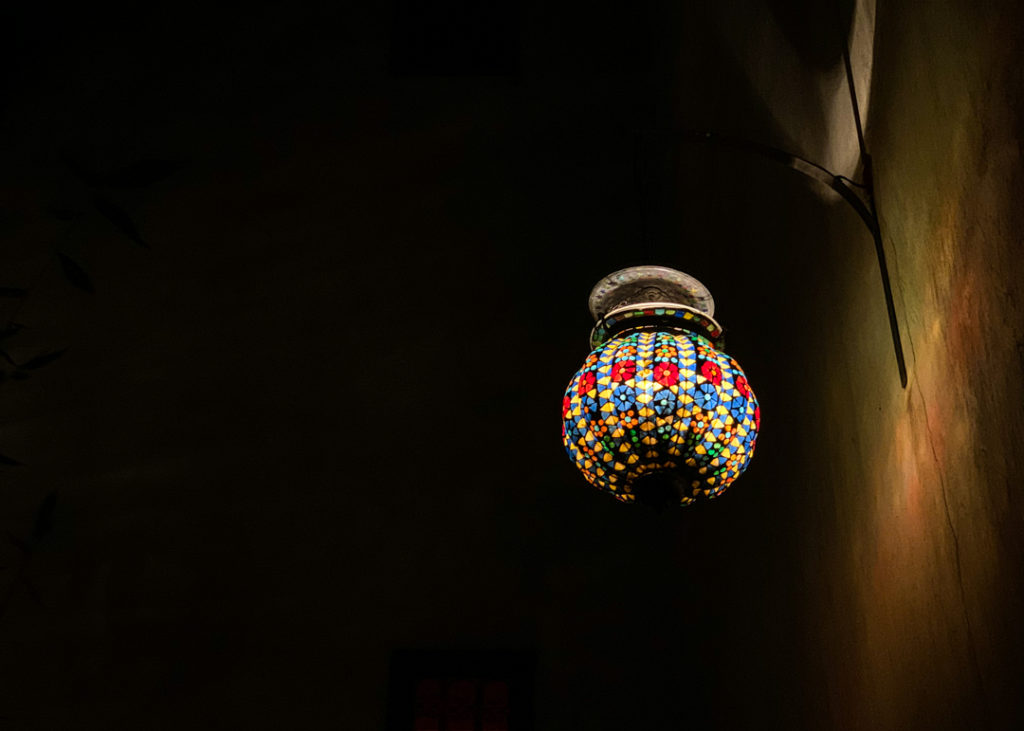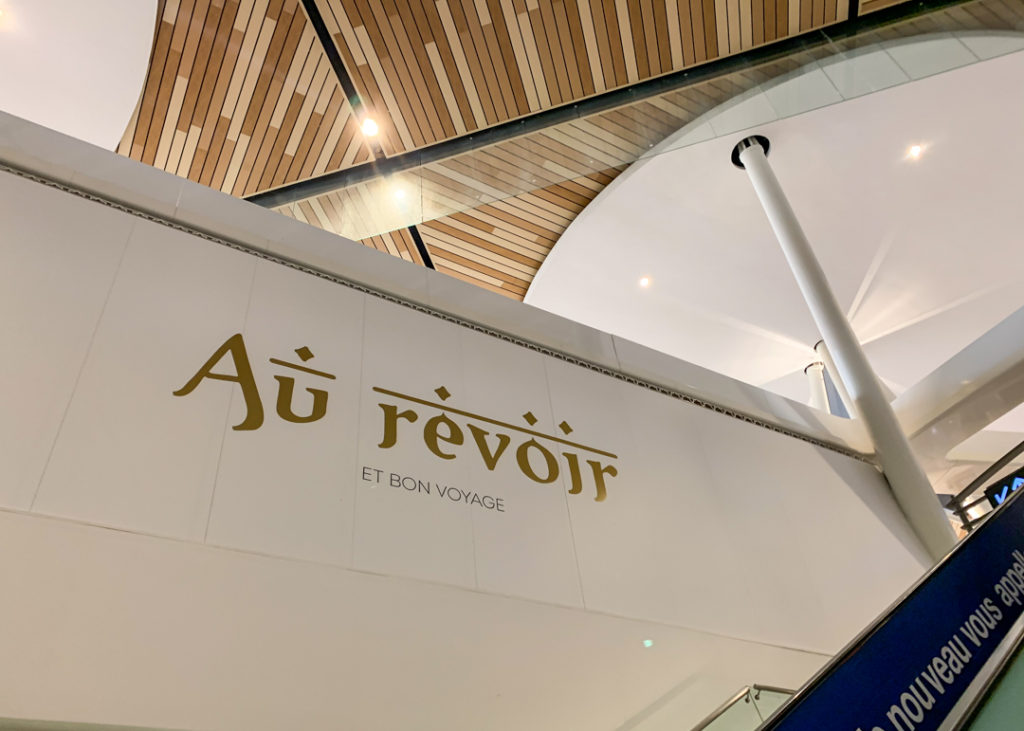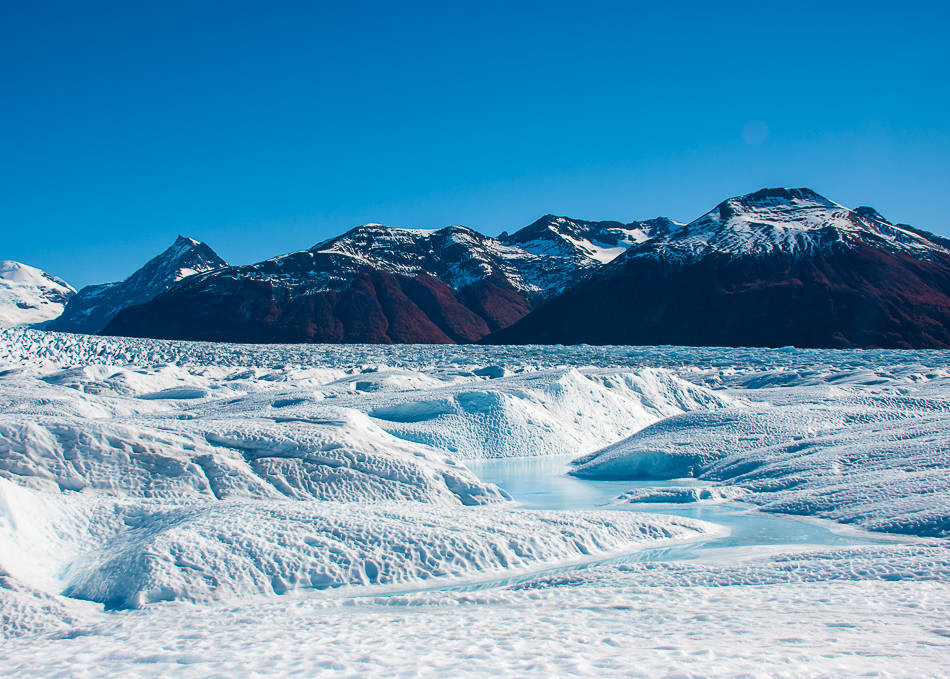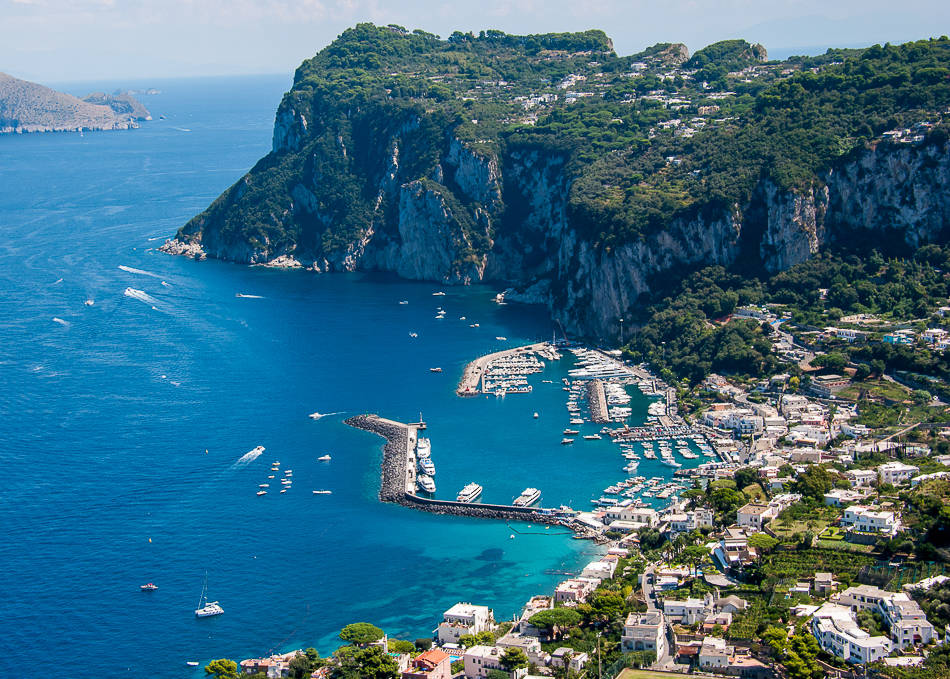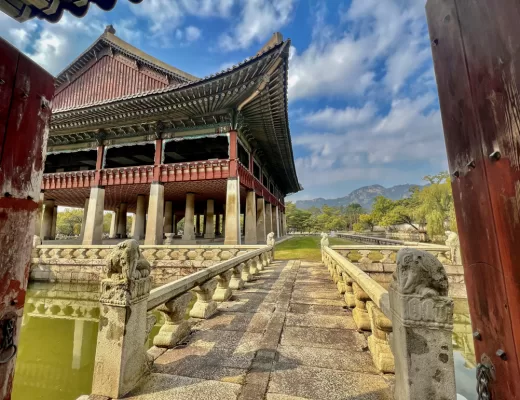Morocco’s most atmospheric city offers a delicate balance between ancient traditions and modern-day conveniences. Chic art galleries stand next to 16th-century palaces and contemporary fashion boutiques rub shoulders with mom-and-pop stalls in the souks. Get lost in its intoxicating and chaotic medina for a few days, an essential part of any visit to Marrakech, and then step outside the walls to explore the rest of the city.
The first sight you’re likely to lay yours eyes on is without a doubt the Koutoubia Mosque, symbol of Marrakech and visible from almost every location in the city.
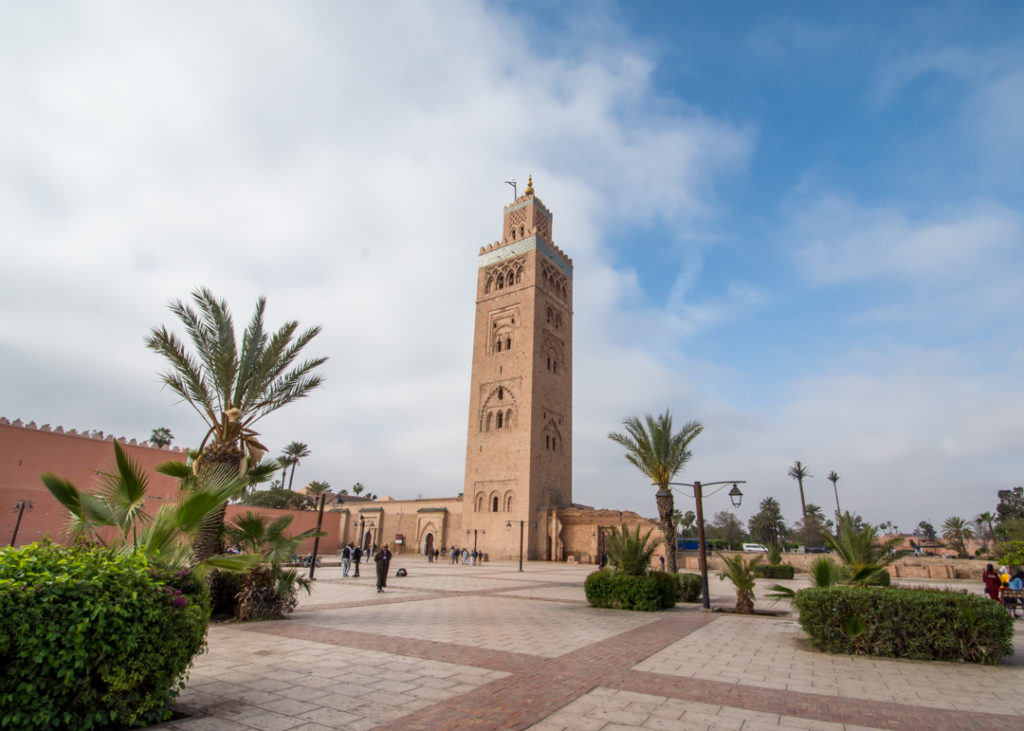
Constructed in the 12th century, its beautiful minaret stands taller at 77m than anything else in Marrakech due to an old city law that forbids any other building in the old city to rise above the height of a palm tree. You’ll find it a useful beacon at times to steer you in the right direction when you’ll inevitably find yourself lost in the labyrinthine alleys.
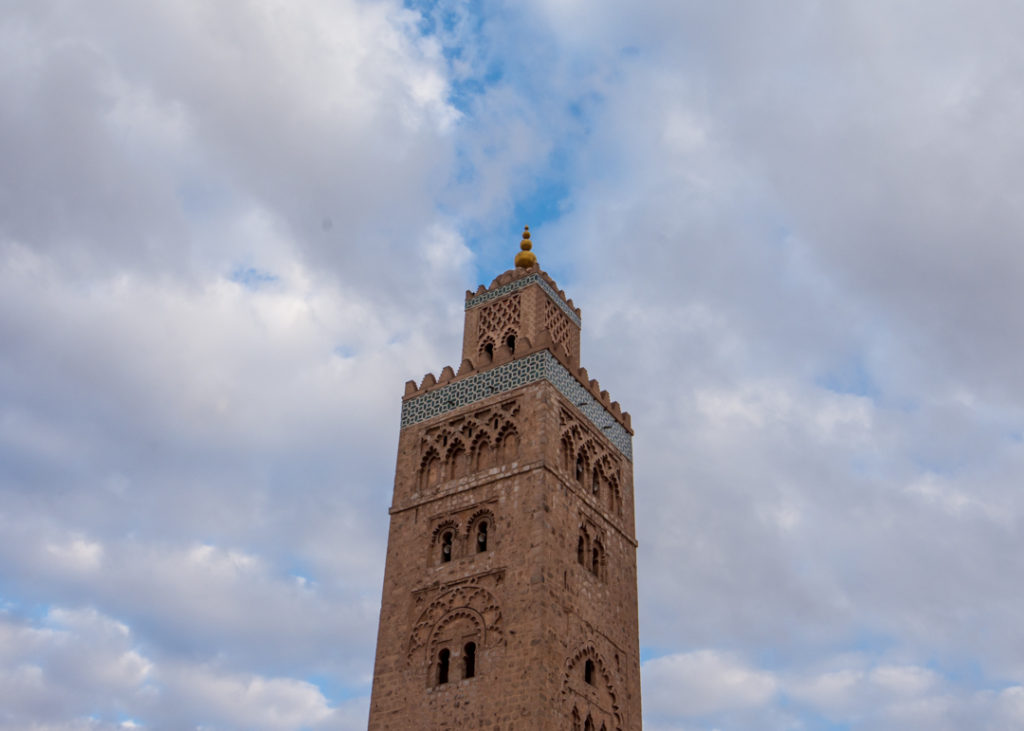
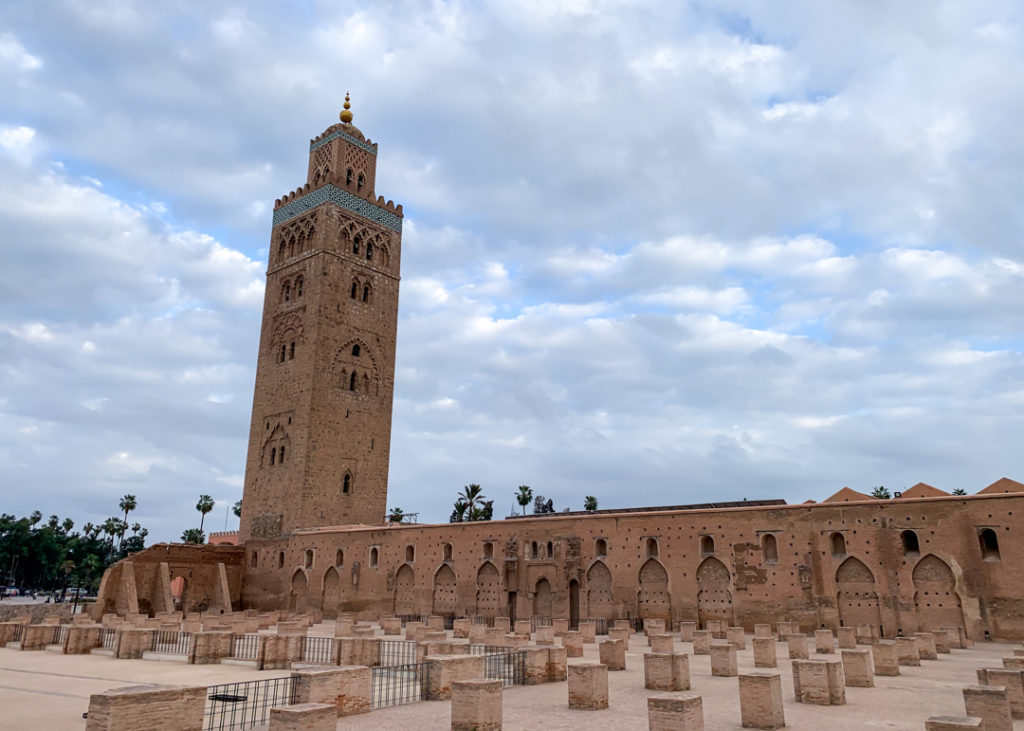
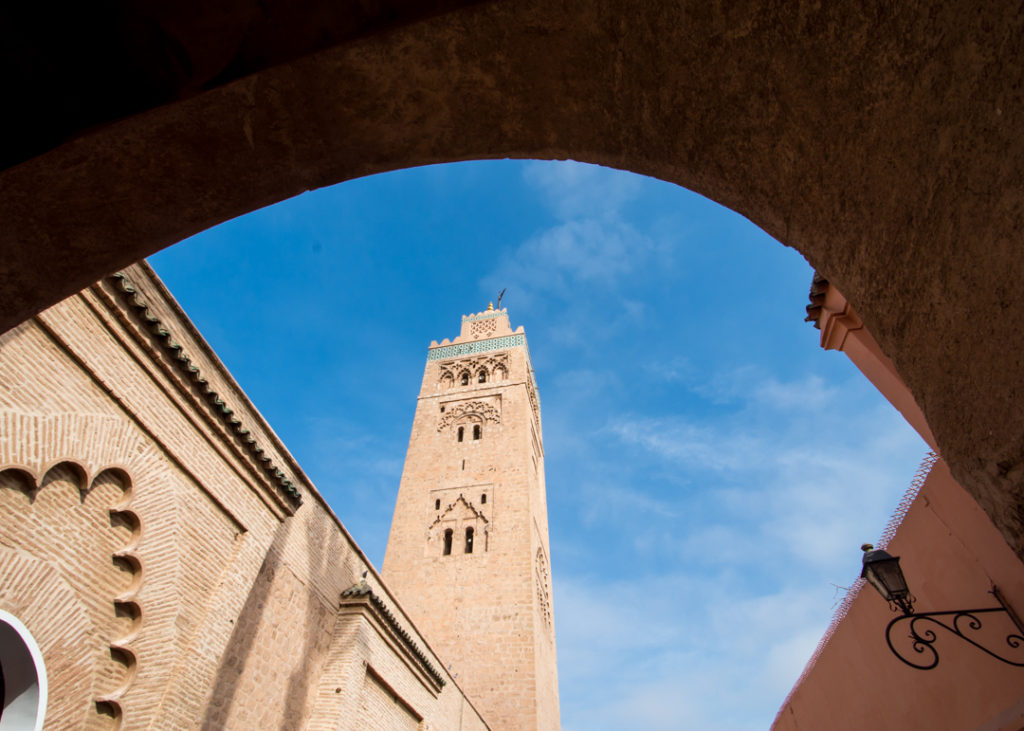
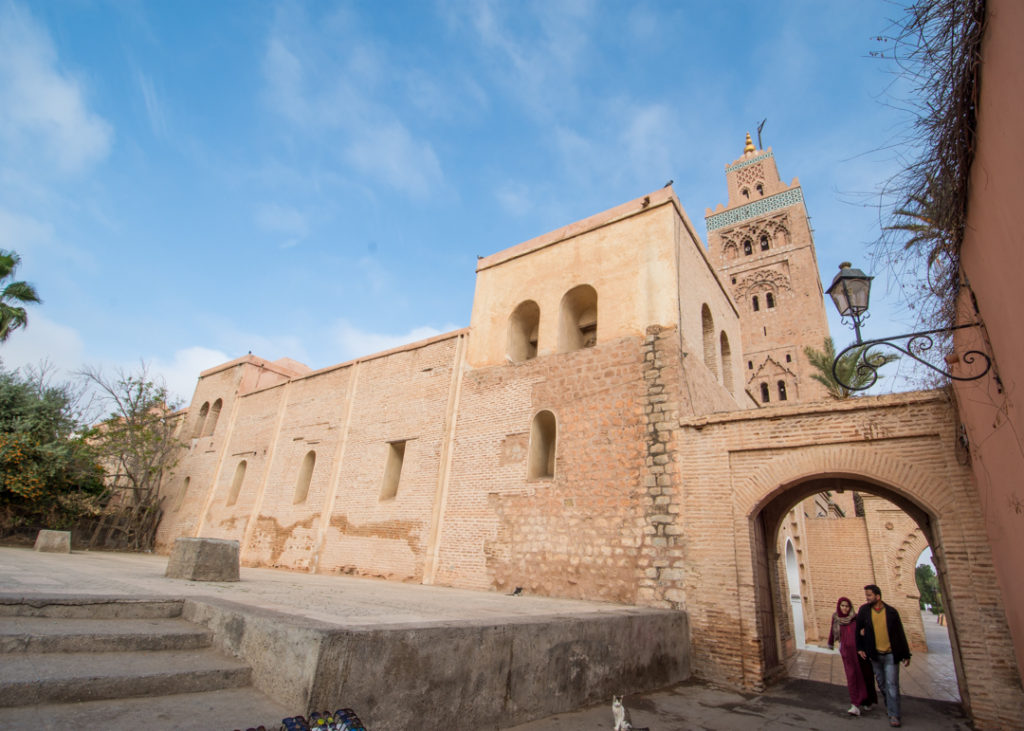
Marrakech is also known as a garden city and perfectly manicured gardens with fountains at their core can be found in riads and across town – perfect oasis in the middle of all the hustle and bustle.
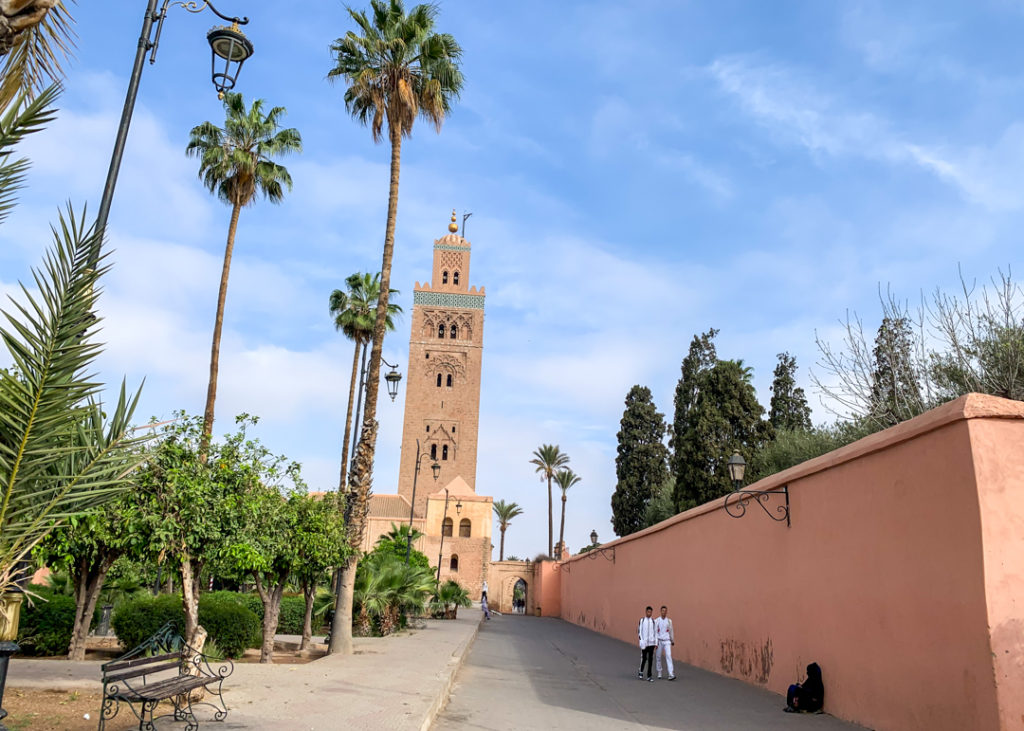
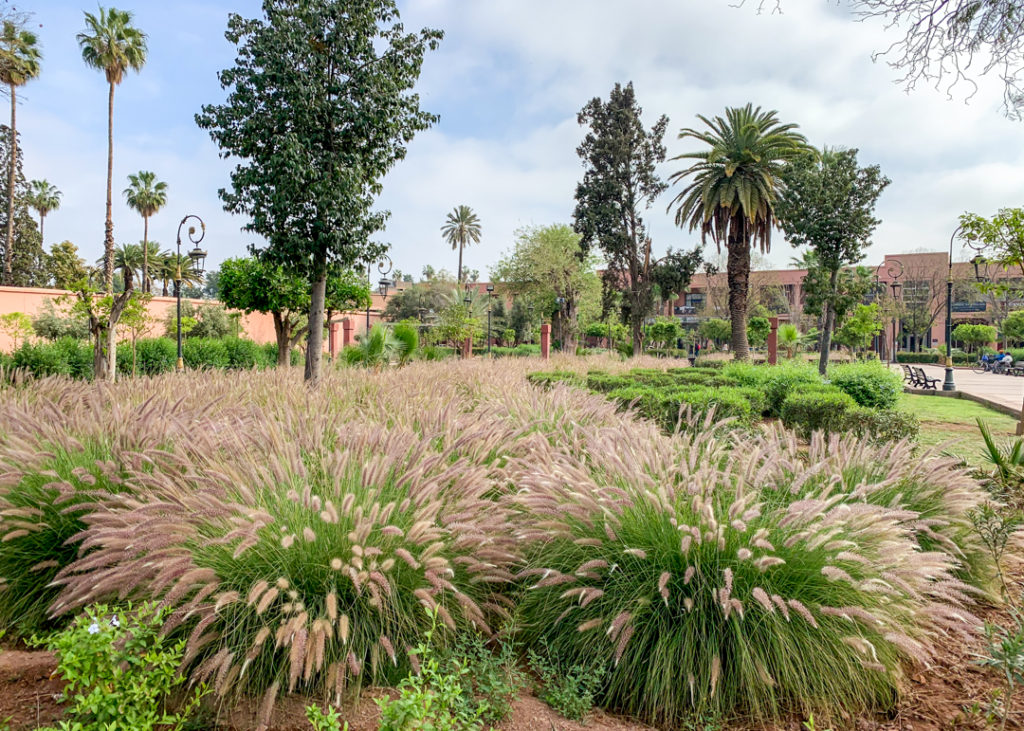
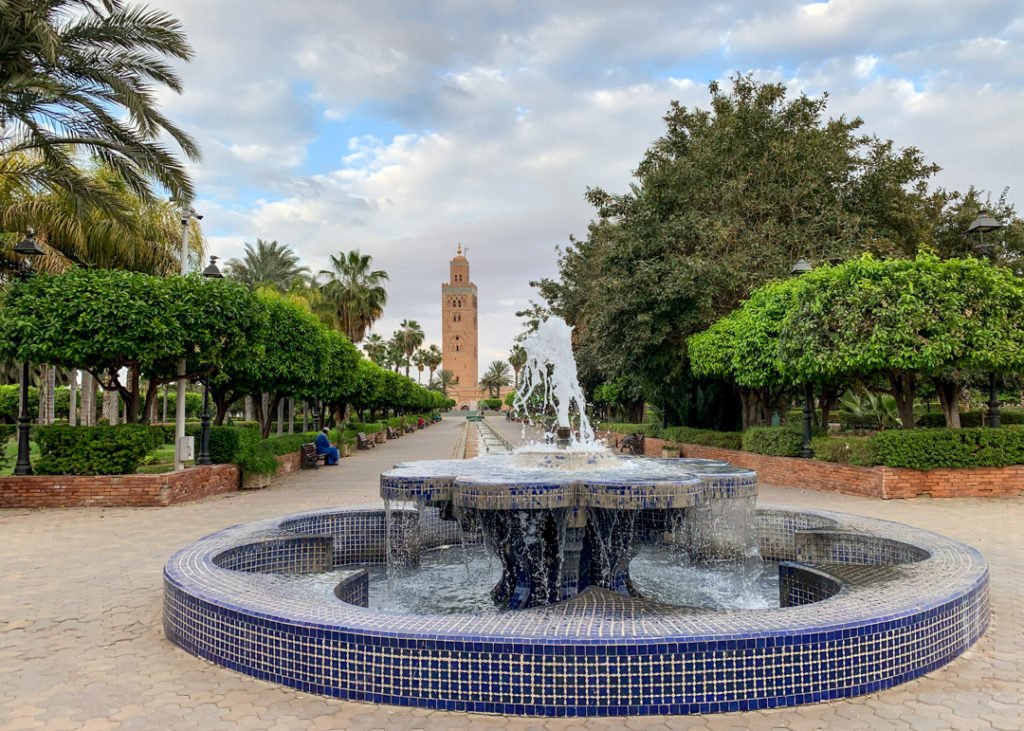
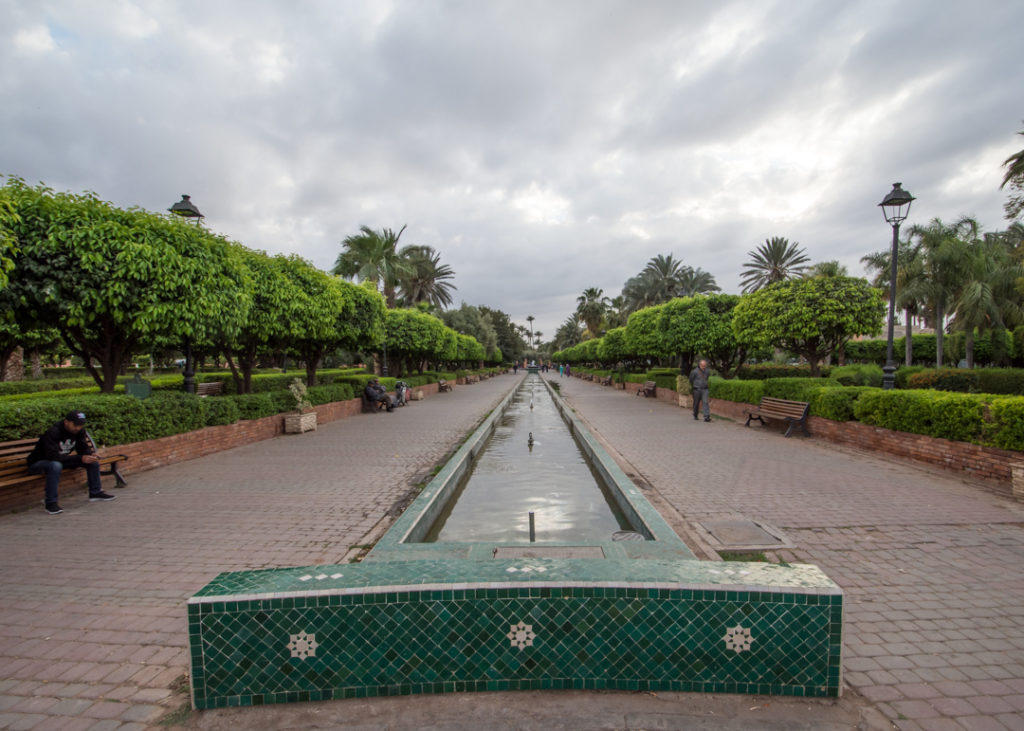
Outside the tight confines of the medina, large and busy commercial streets and roundabouts buzz with tooting mopeds, horses, carts and hurried pedestrians.
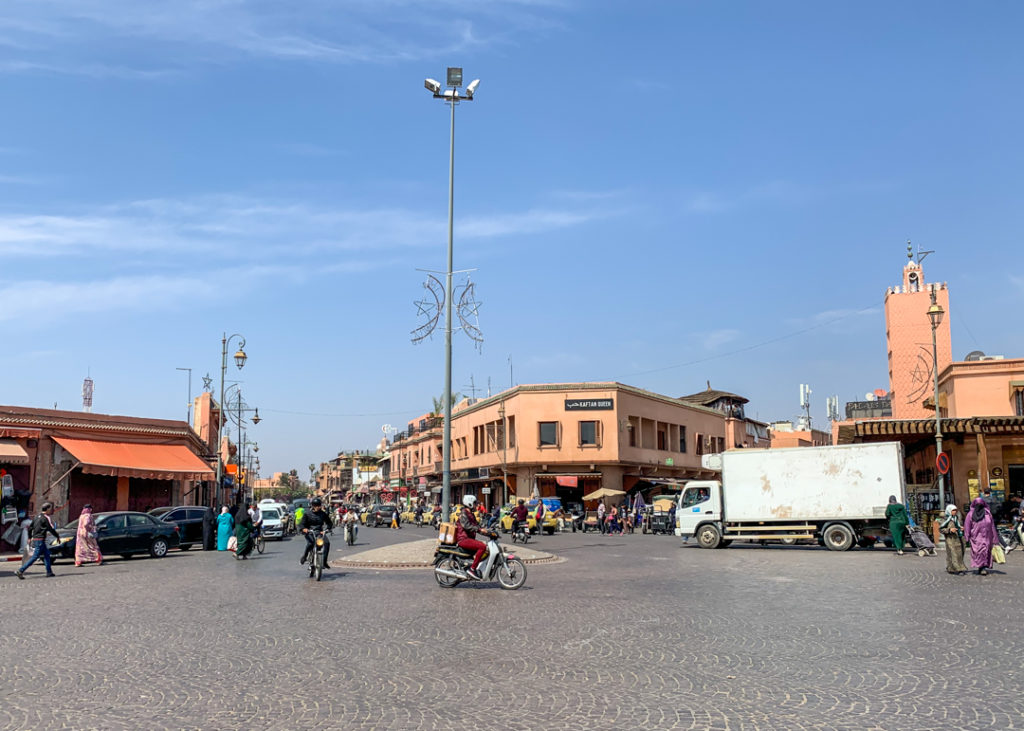
Street stalls are aplenty here too and besides the ubiquitous oranges, look for a pomegranate seller who’ll freshly squeeze a few into an addictive sweet and tart thirst quencher.
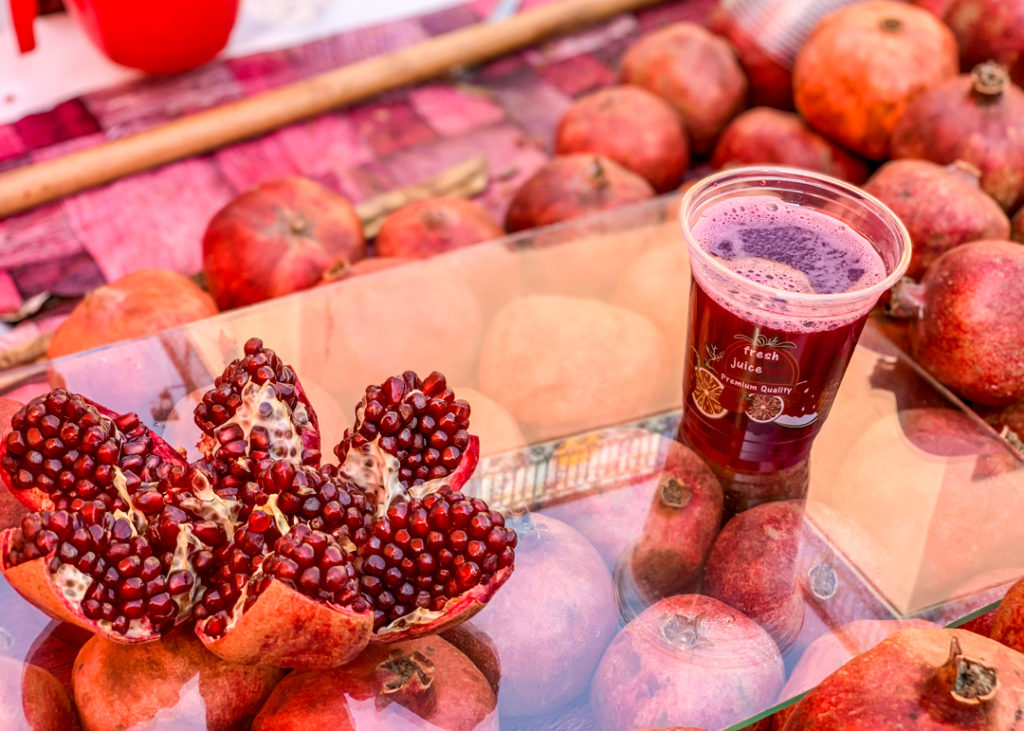
Make your way to the Kasbah Mosque to reach your next stop located just beside it: The Saadian Tombs – one of most coveted archeological sites in Morocco.
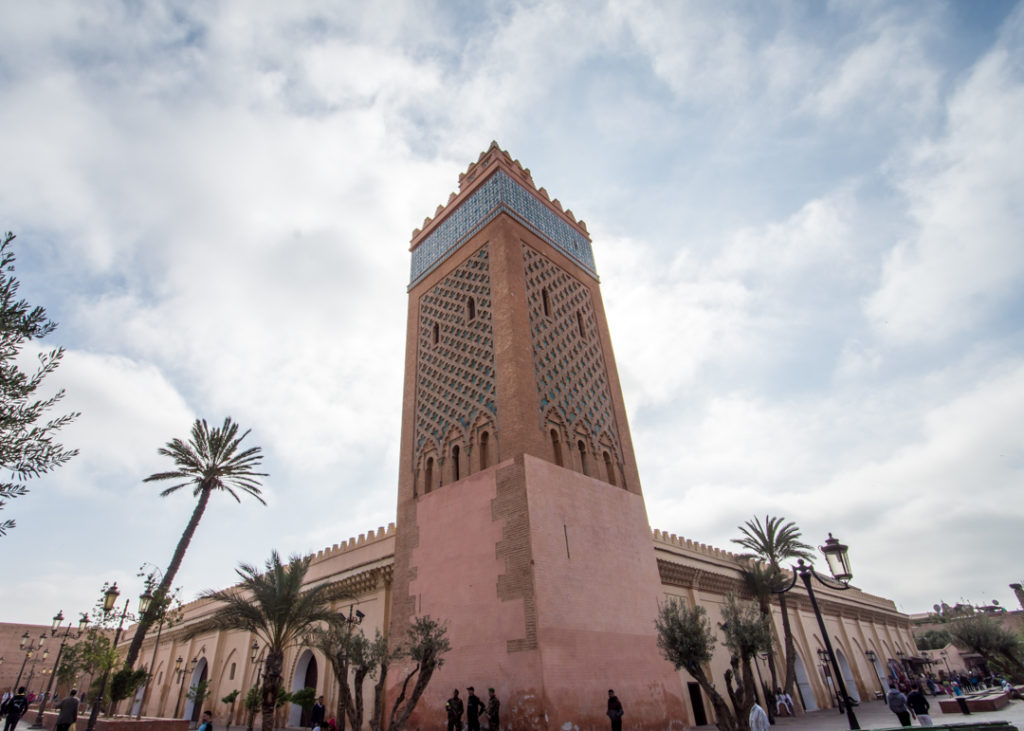
The royal necropolis was kept deliberately hidden and sealed off for centuries and was finally uncovered in 1917 through aerial photography. It is here that lie the remains of important figures from the Saadi Dynasty, which ruled Morocco from 1549 to 1659. You’ll enter through a narrow passage which leads to an enclosed garden with embellished graves covered in colorful tiles.
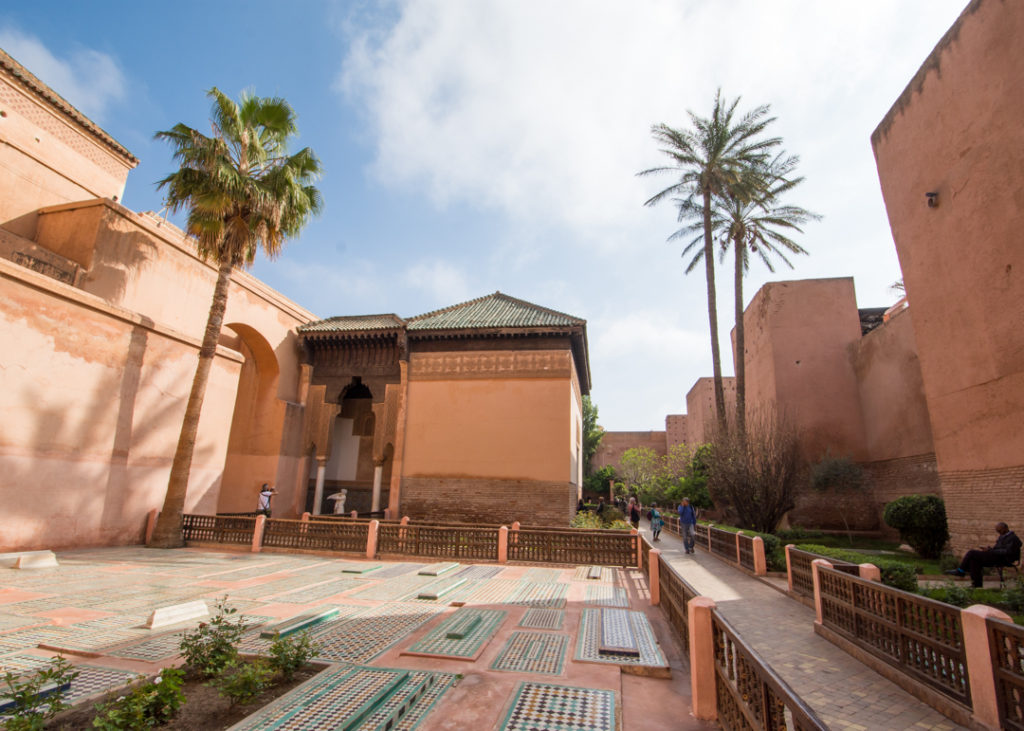
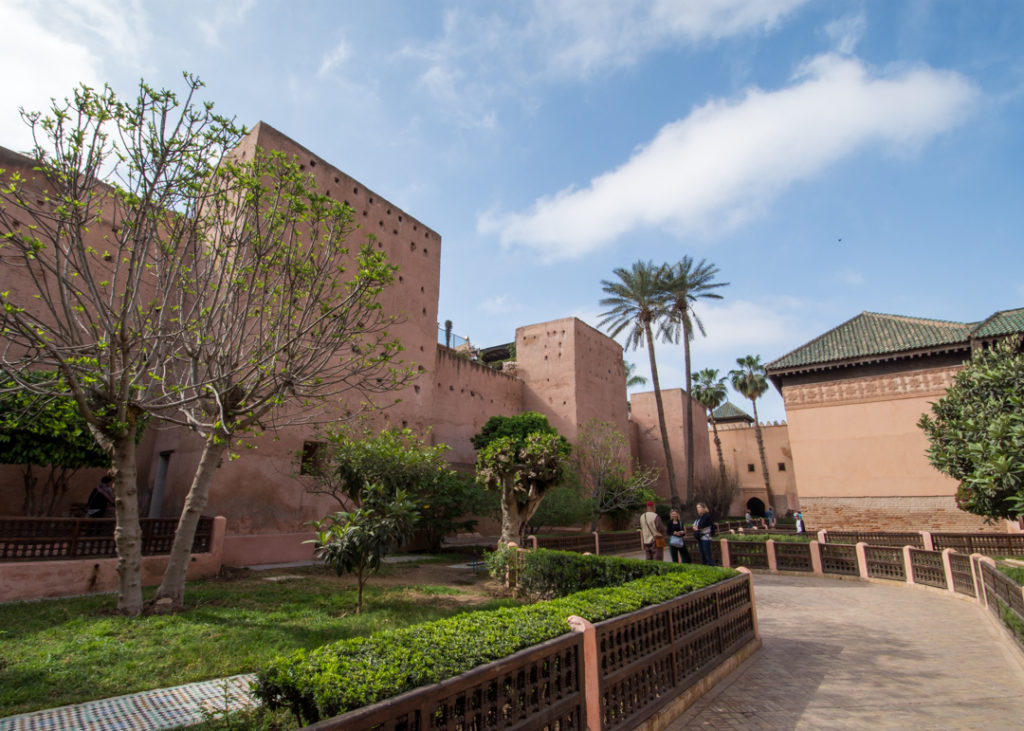
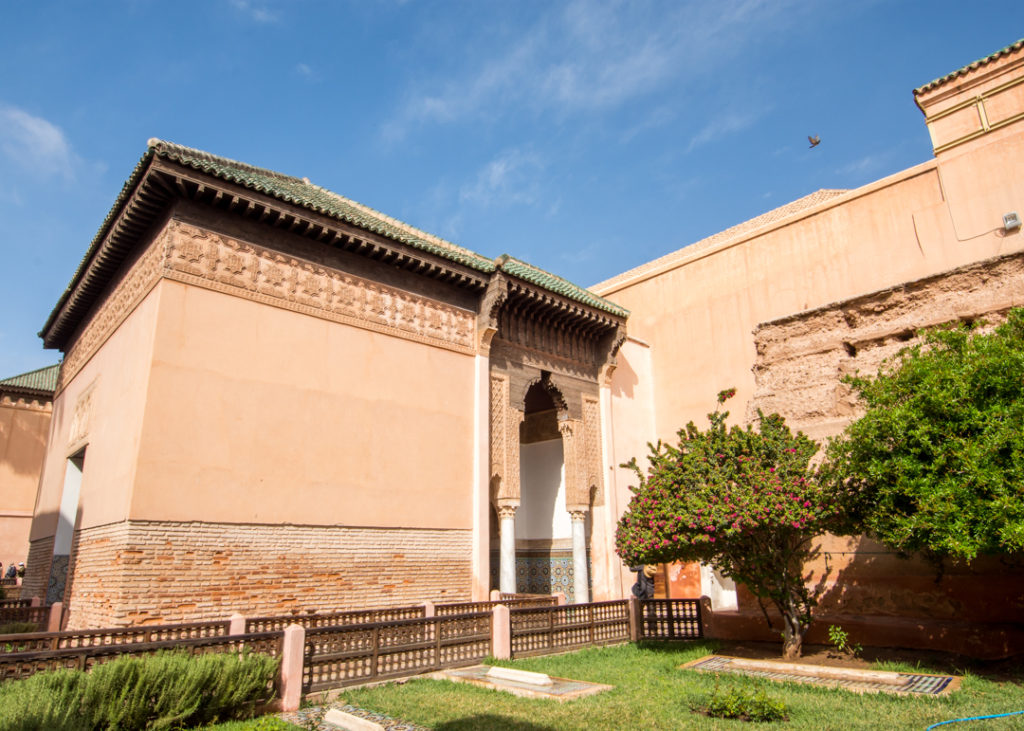
Chambers for what were certainly the VIPs of the time are accessed through exquisitely hand carved doorways, the artistry and craftmanship of which can only be admired in a state of utmost awe.
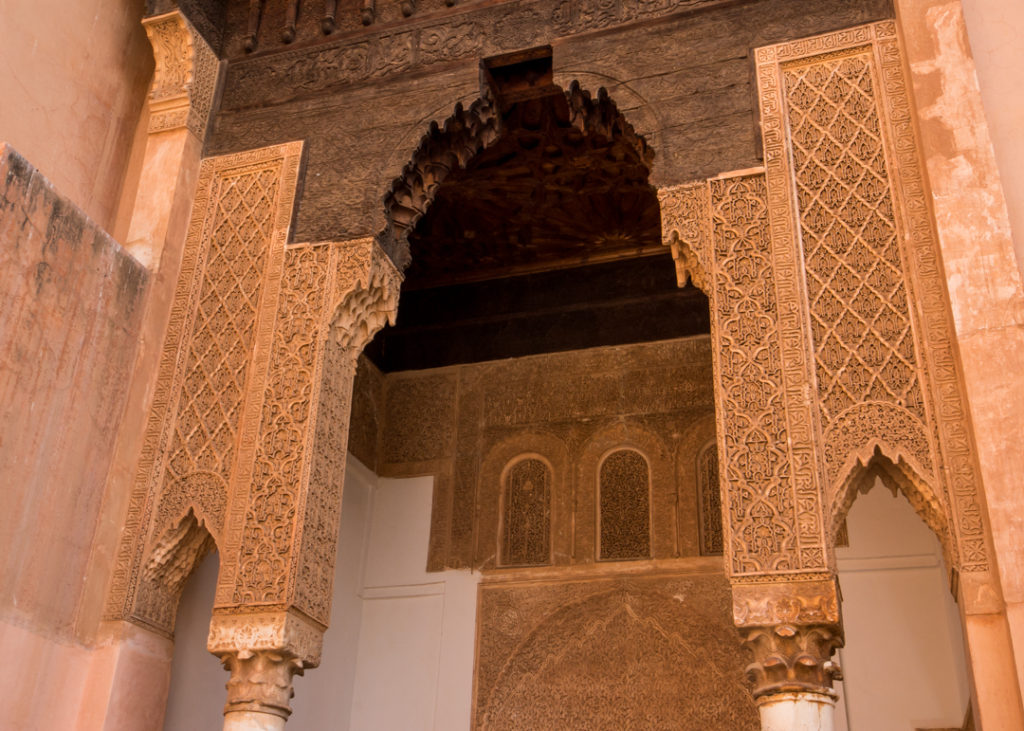
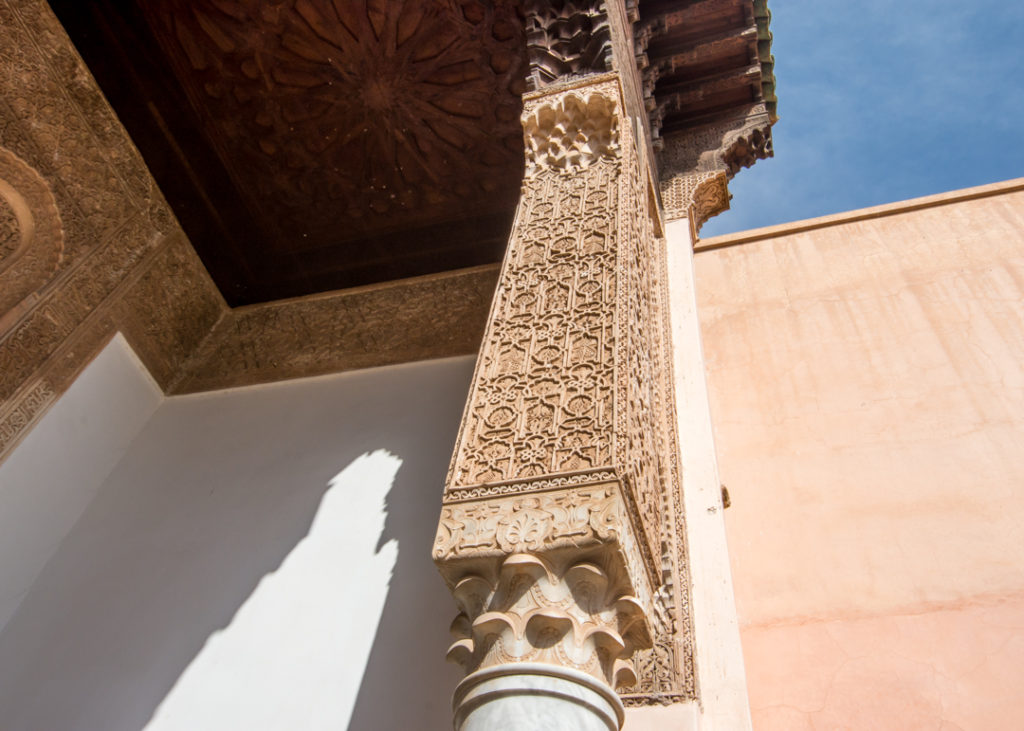
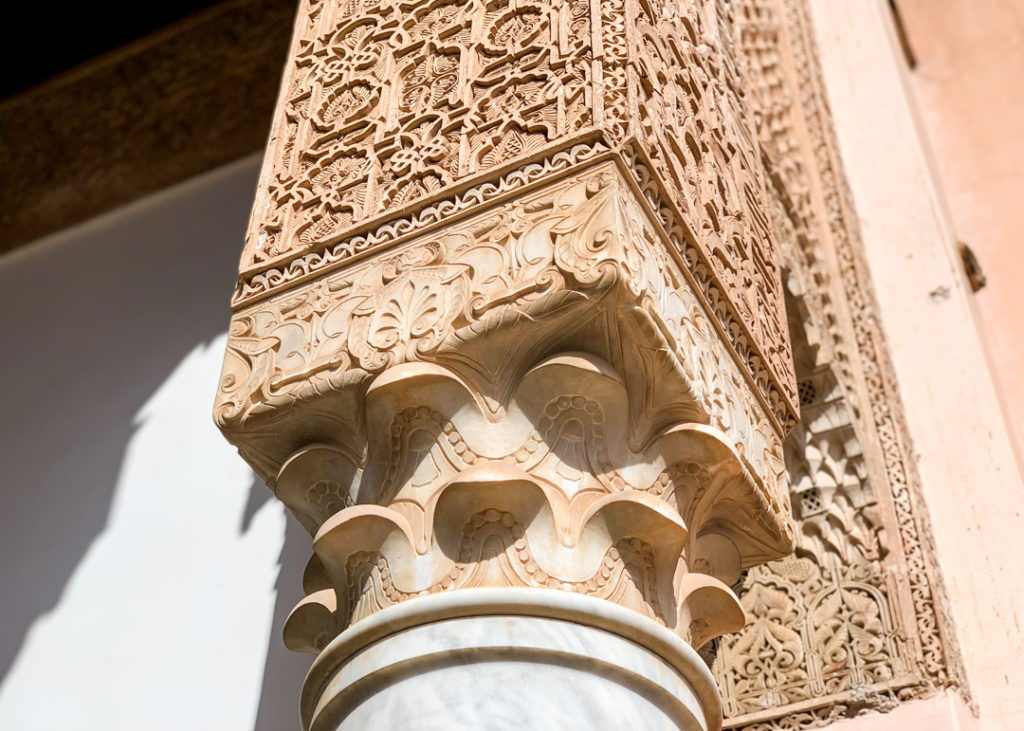
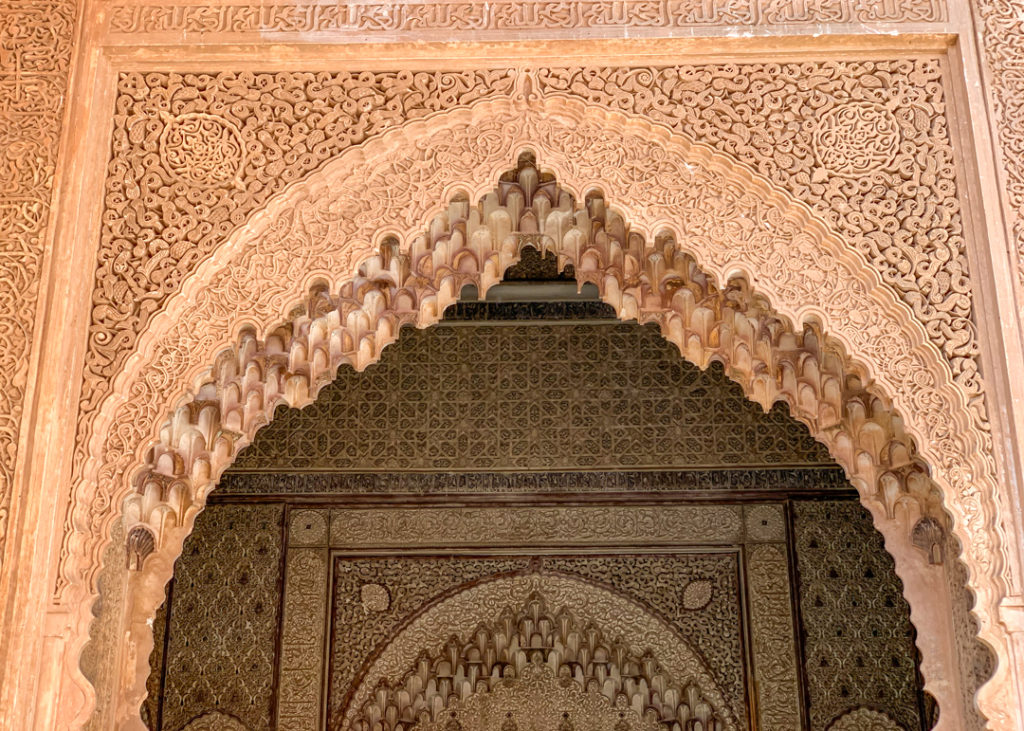
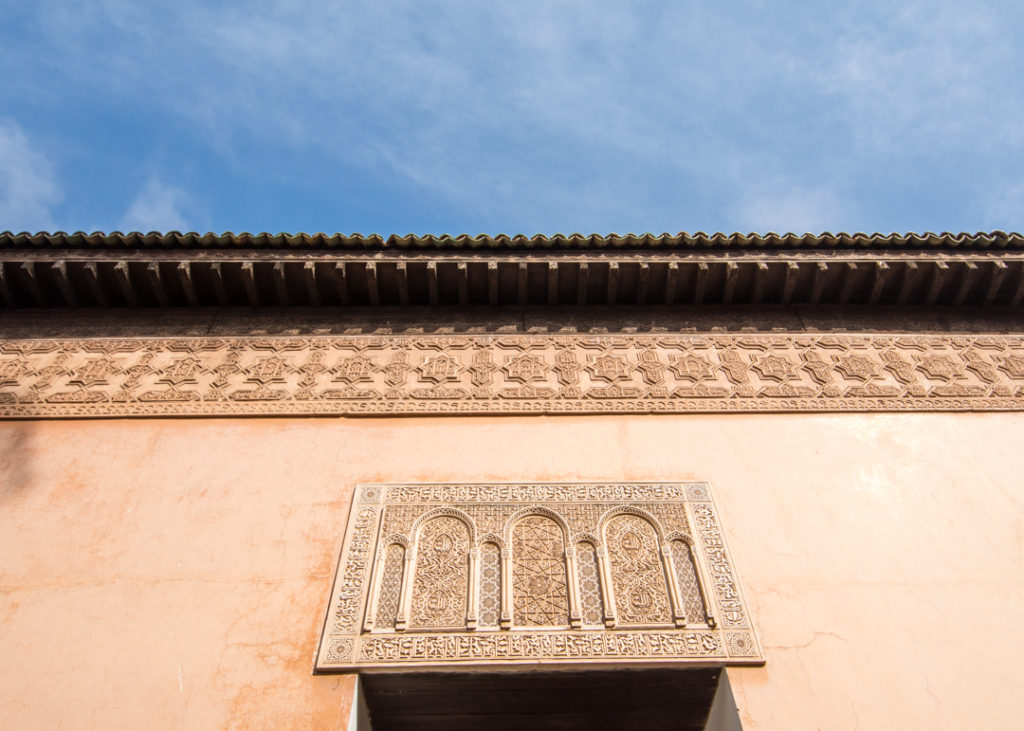
The two magnificent mausoleums on site though are the real reason you’re here. These ‘no expense spared’ showing of riches hint at the lavish status of their occupants.
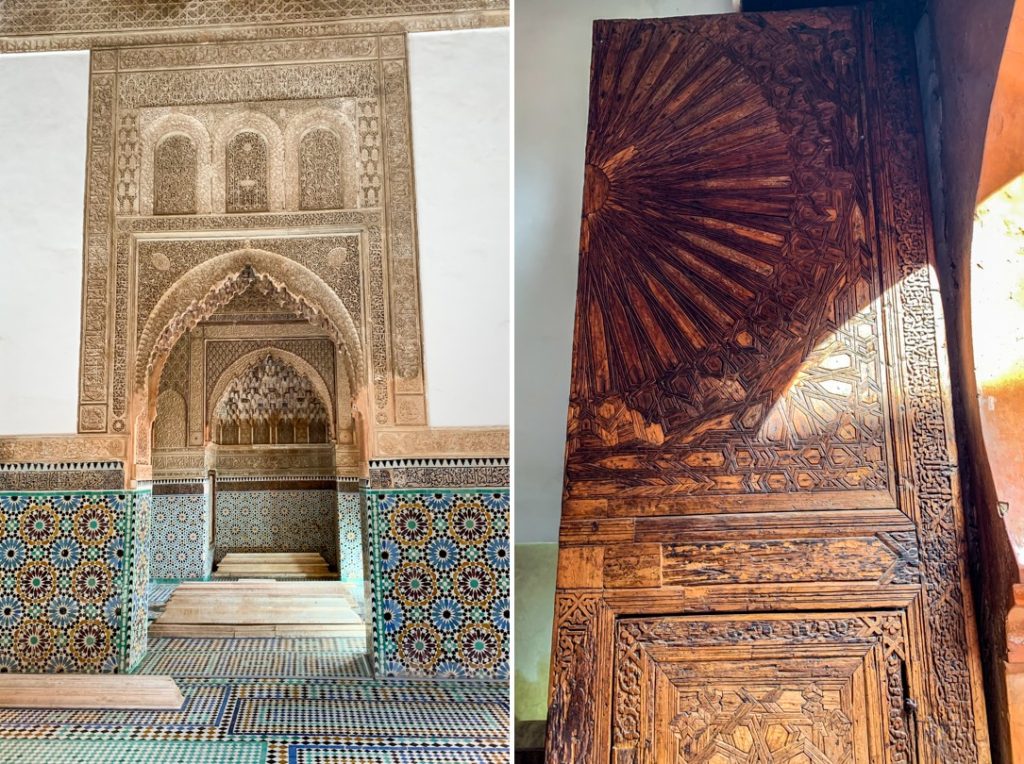
The older mausoleum houses the remains of the dynasty’s founder and Sultan Ahmed el Mansour’s parents.
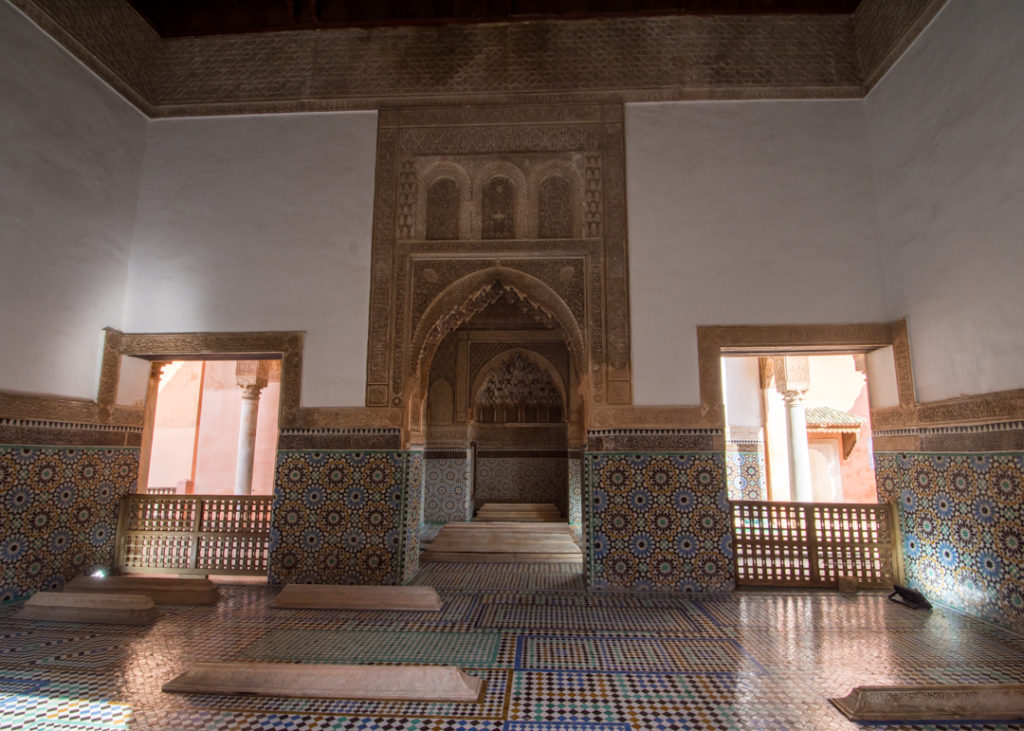
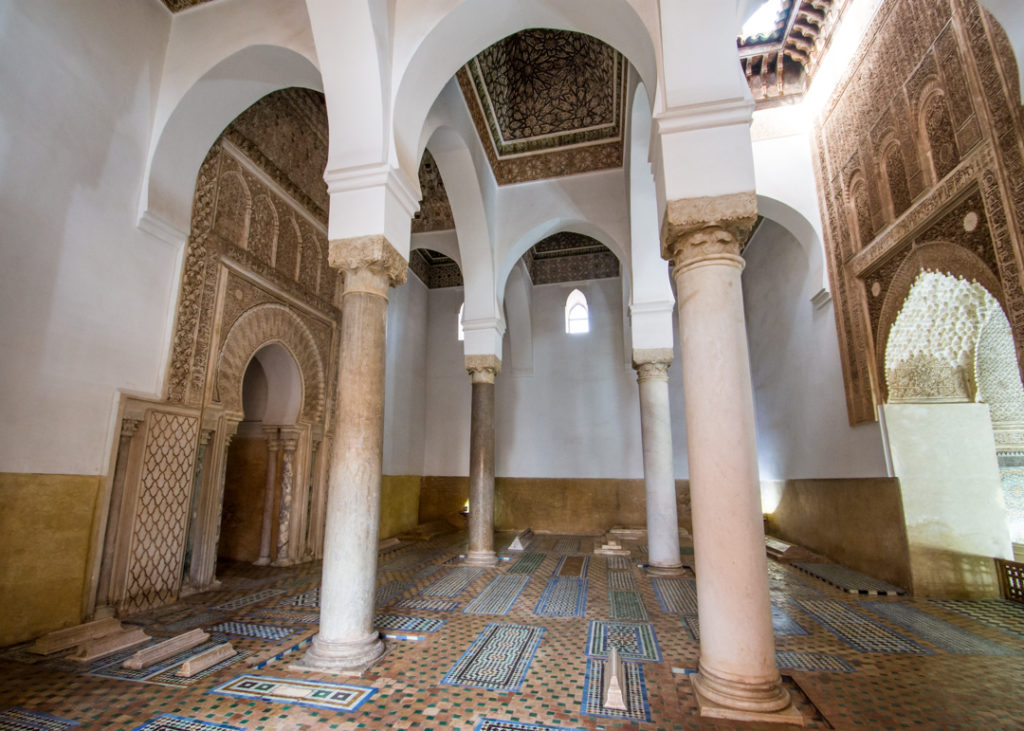
Make sure to raise your head up and take in the ceilings too which are as ornate as the arches.
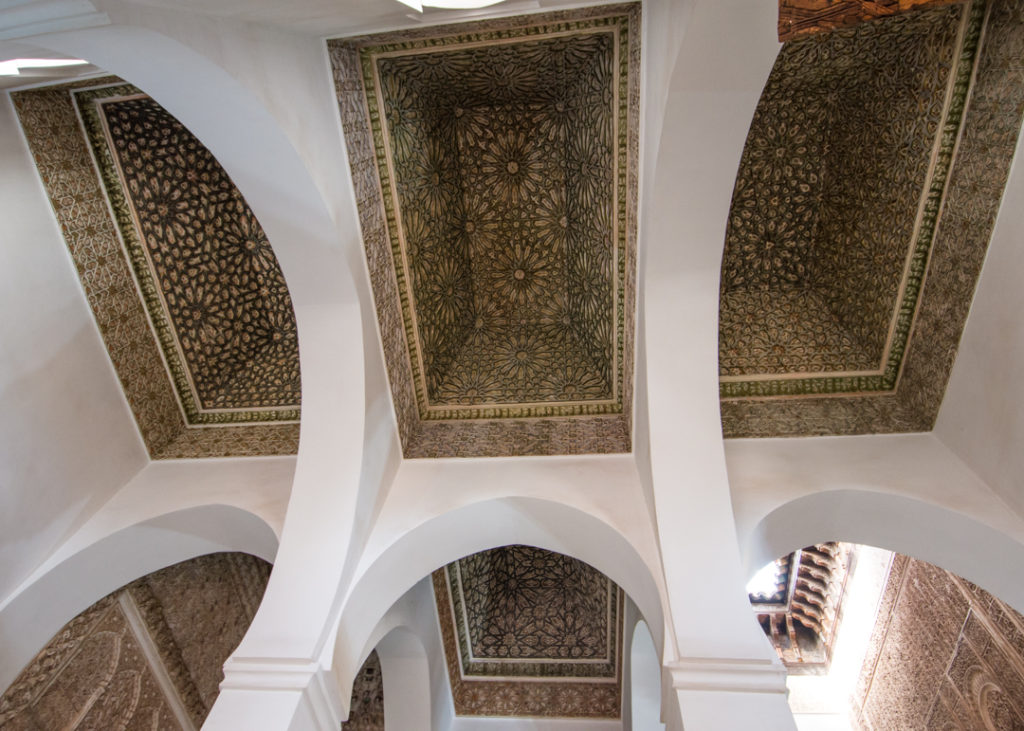
The main mausoleum, which contains the body of the Sultan, is the real showstopper. Also called “the Hall of Twelve Columns”, it was built from imported Italian Carrara marble, with gilding honeycomb muqarnas, a type of ornamented vaulting, decorated with gold.
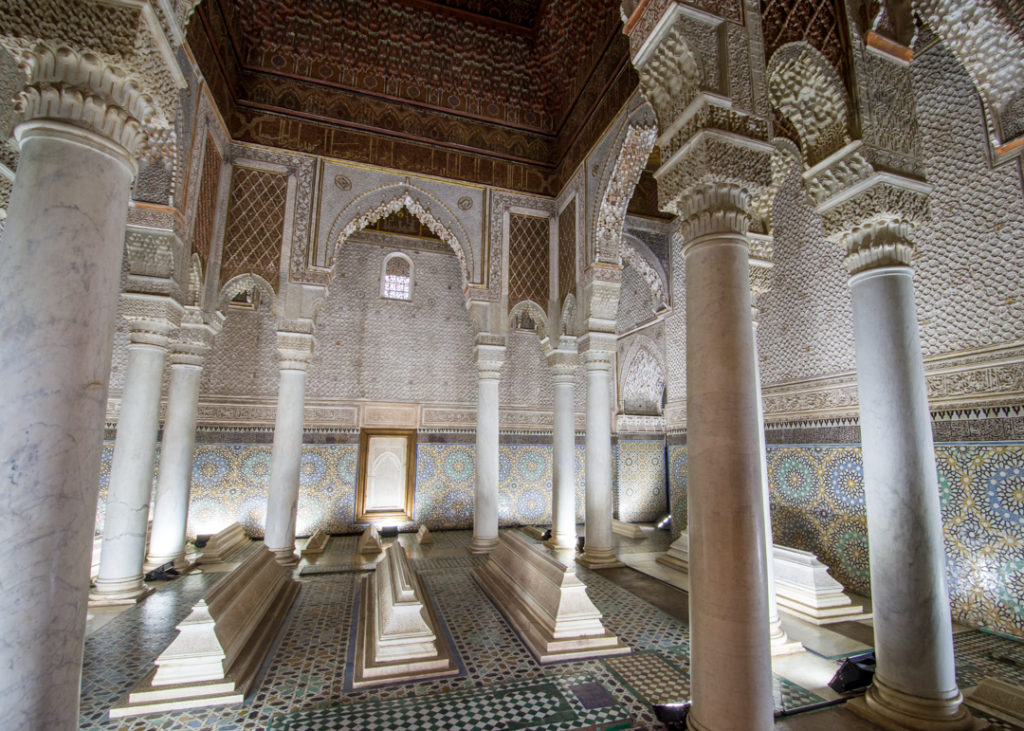
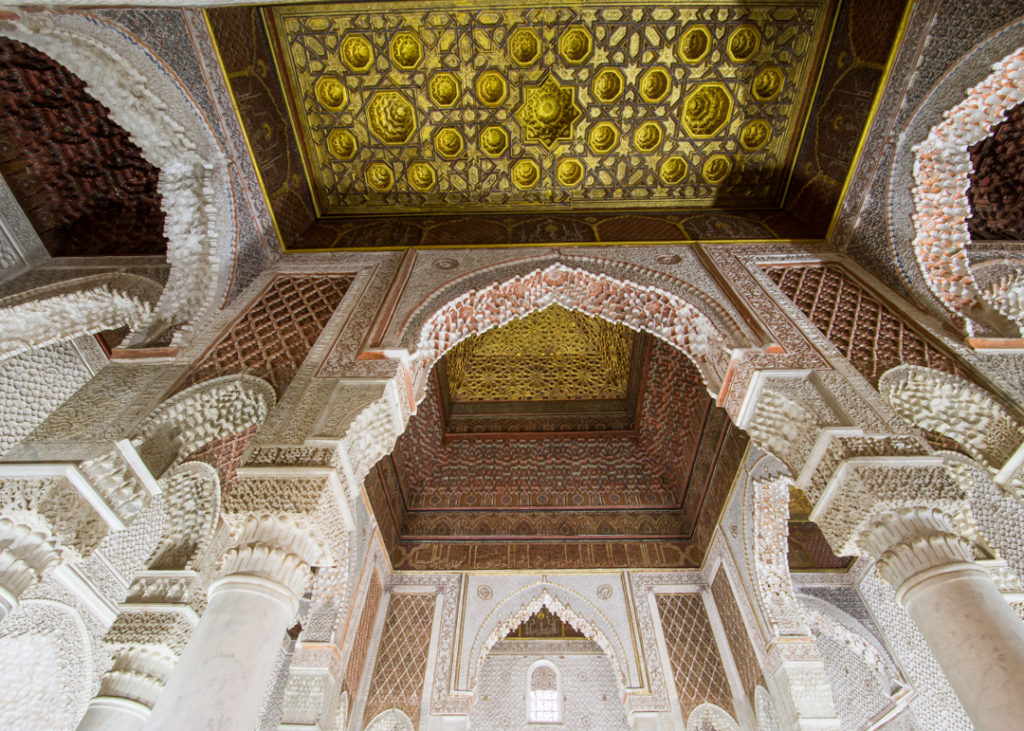
The Sultan shares this absolutely stunning work of art with some of his closest family members and descendants. In total, the Saadian Tombs house over 66 princes and other prominent figures as well as over 100 chancellors and their wives, each resting in proximity to the Sultan relative to his or her status. It’s a marvelous sight and depiction of beauty you absolutely cannot miss.
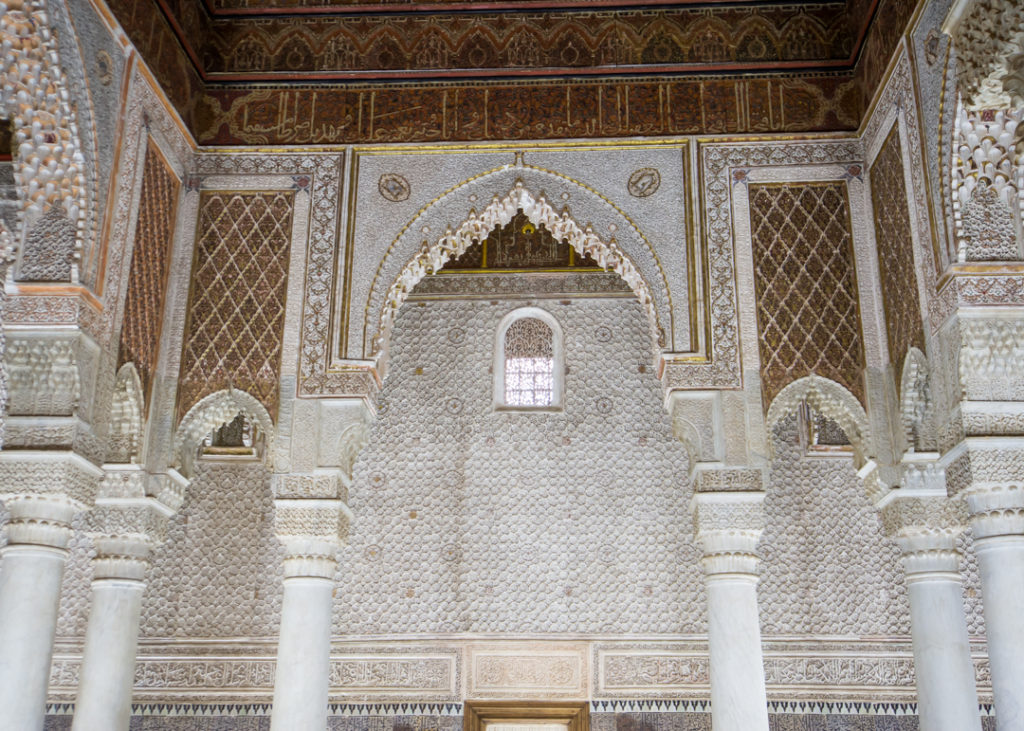
Follow the high ramparts near Place des Ferblantiers to reach another fascinating piece in the puzzle of the Saadi Dynasty.
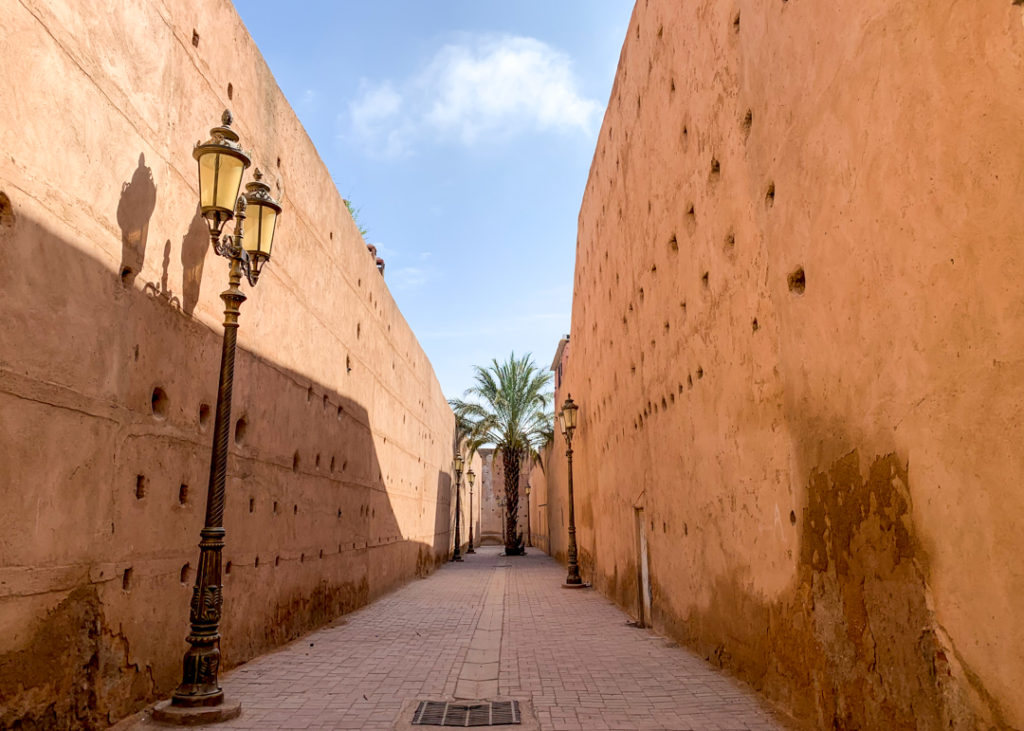
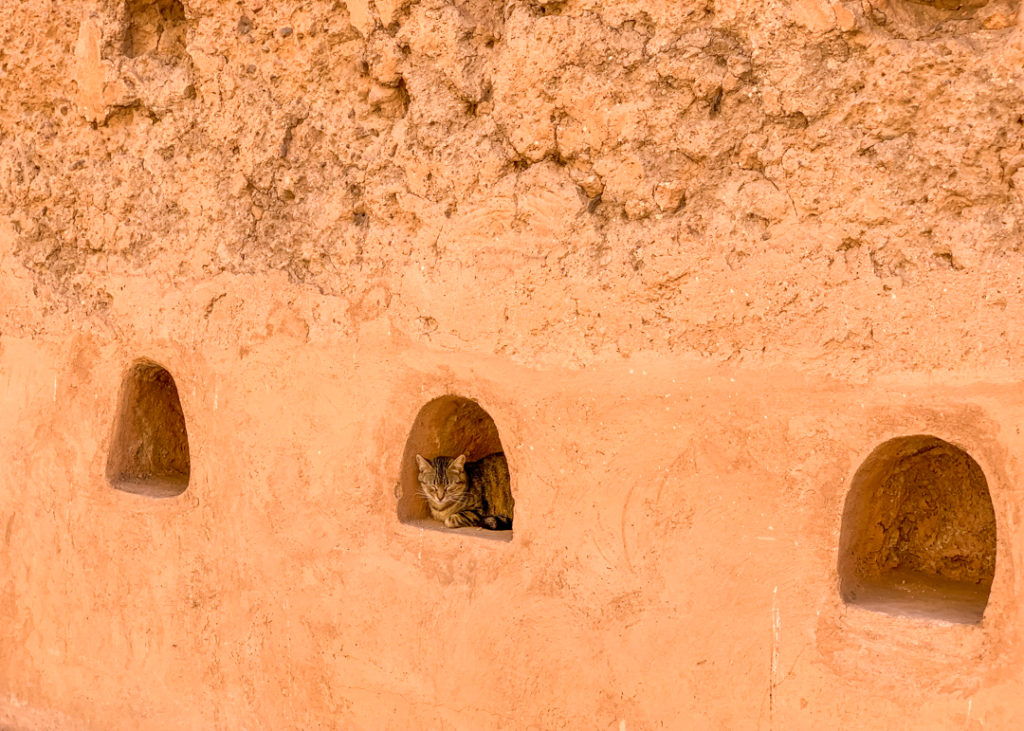
The entrance to El Badi Palace through a series of former bathhouses (hammams) clearly shows that you’ll have to use your imagination here to picture the splendors of Sultan Ahmad al-Mansur’s residence (from the Saadian Tombs you just visited).
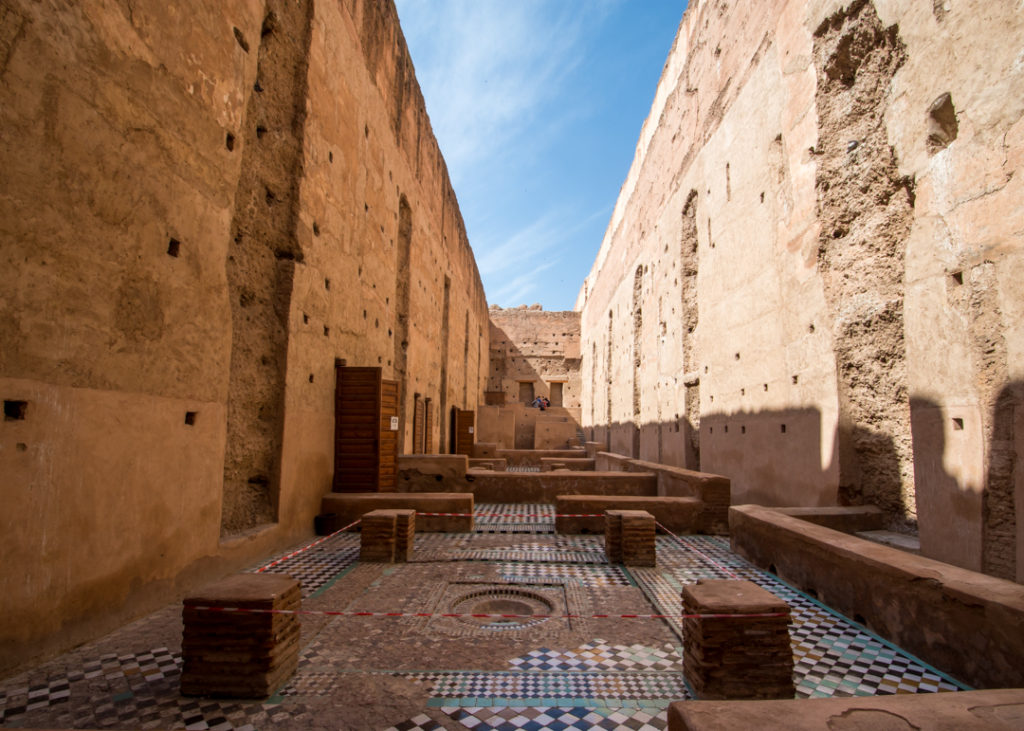
Meaning “the incomparable”, El Badi was once the most splendid building in the entire city although it is today only a shadow of its former glory.
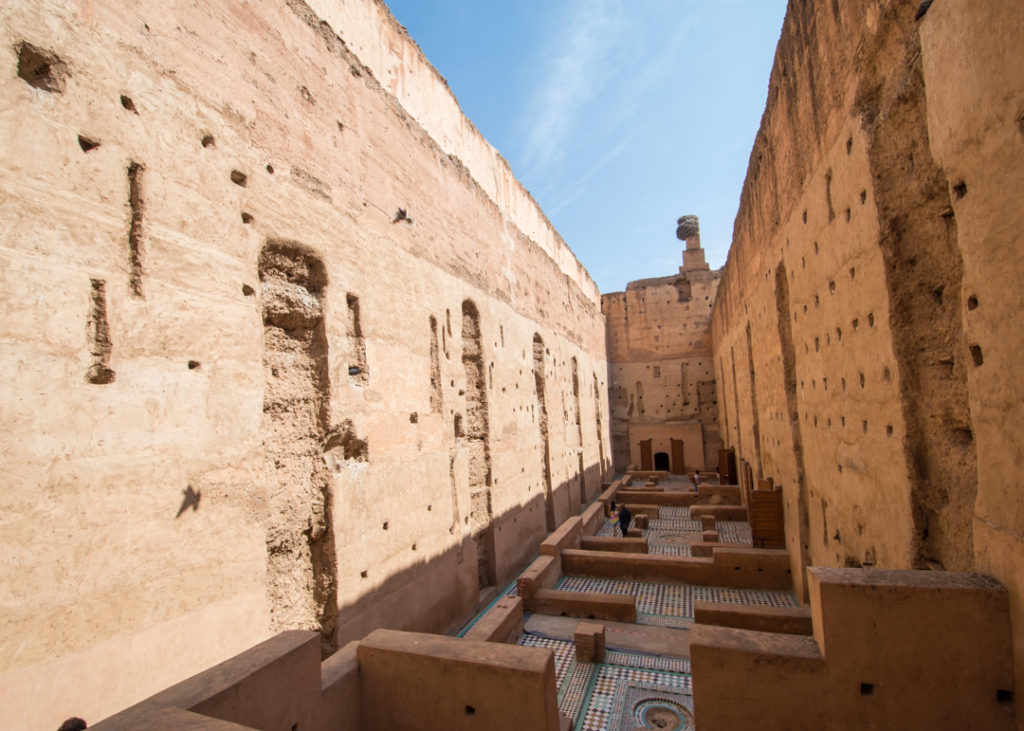
Once you step into the enormous courtyard, you get a better feel for the royal residence which took approximately 25 years to build and is thought to have included no fewer than 360 rooms in addition to the courtyard with several pavilions and a large pool.
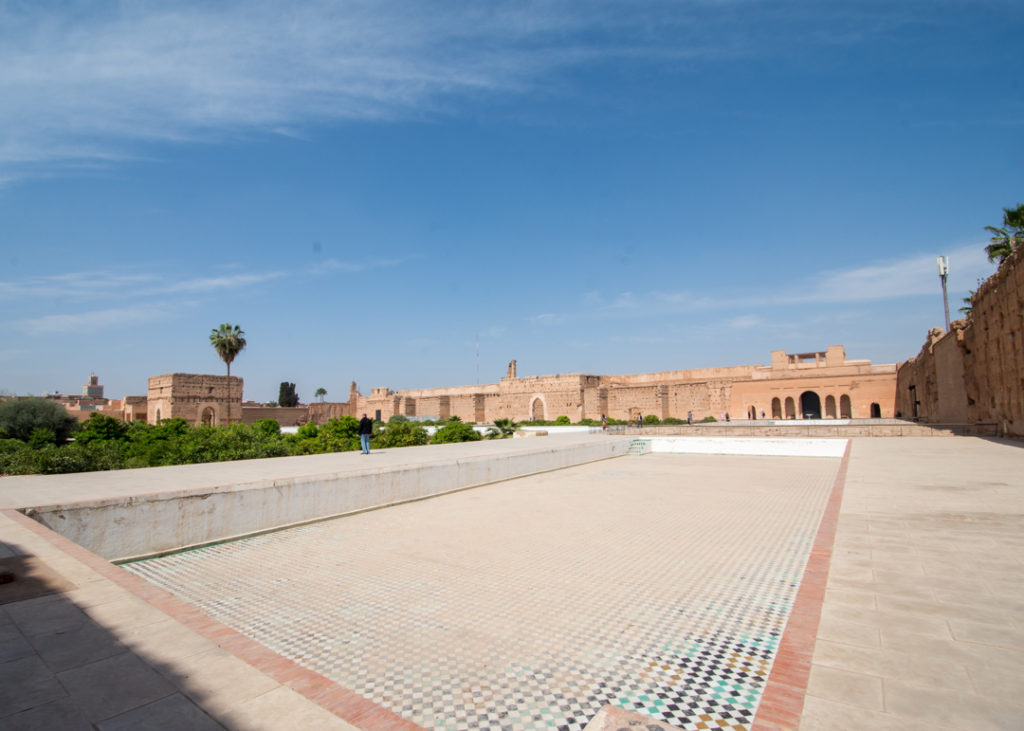
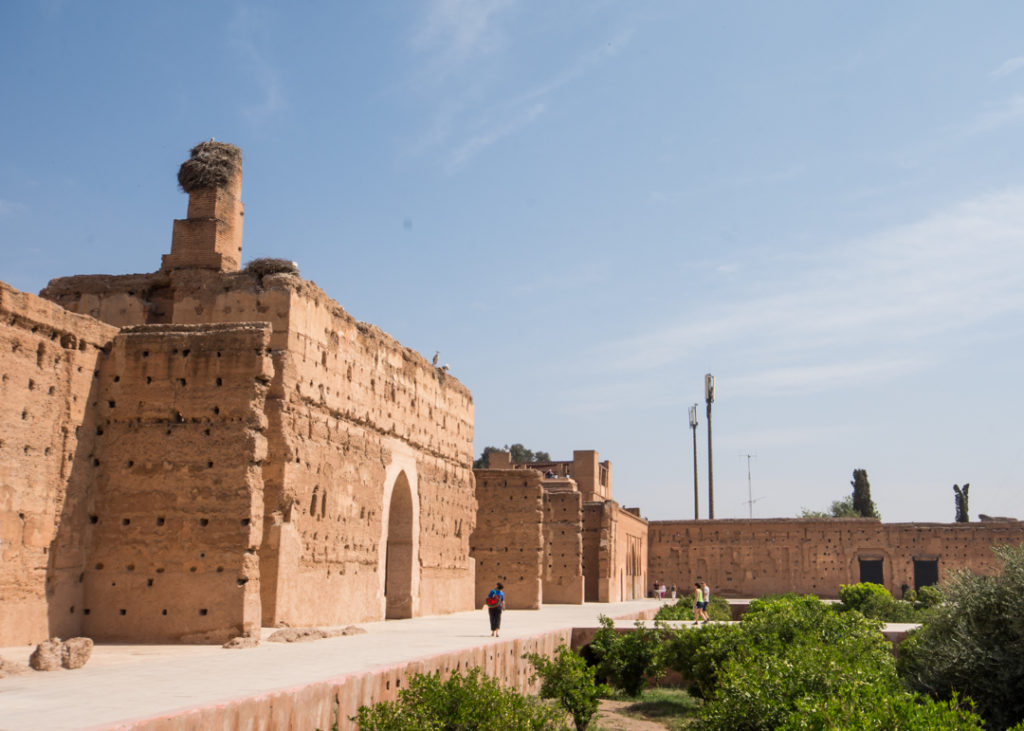
Similar to the Saadian Tombs, the palace was once decked out in the most expensive materials of the era, from Sudanese gold and Italian Carrara marble to onyx and ivory. When the Saadi Dynasty fell, it apparently took the conqueror a decade to strip the palace of all its treasures and reduce it to a ruin.
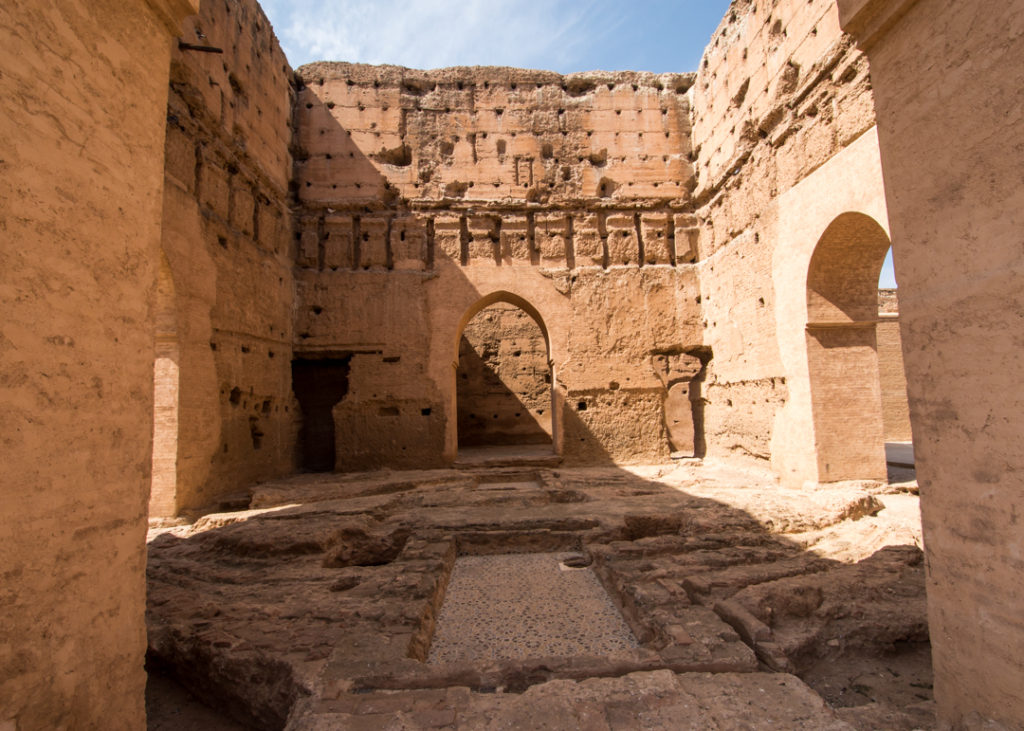
Today you can still admire the sandstone shell and the impressive scale, especially when you stand in the middle of the courtyard and do a 360.
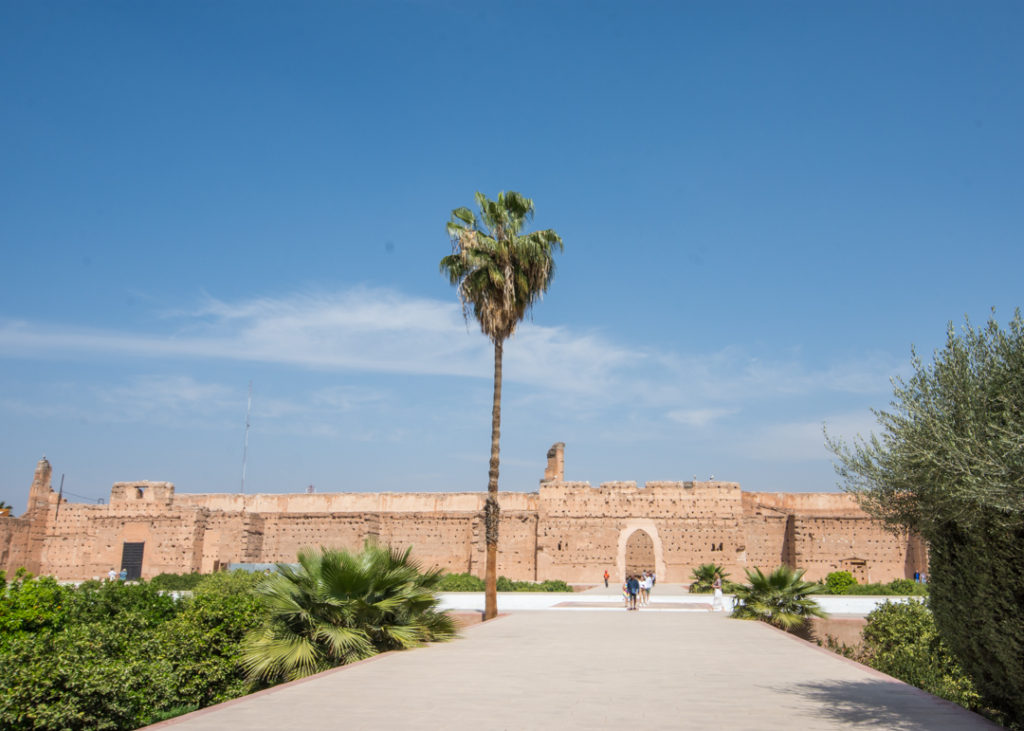
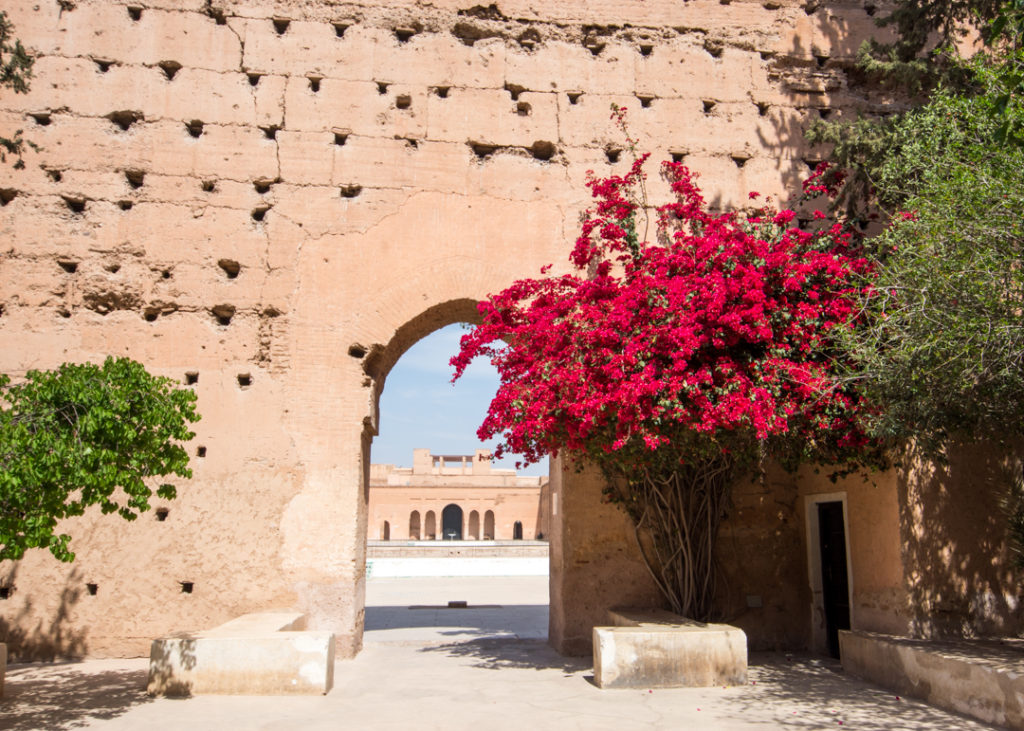
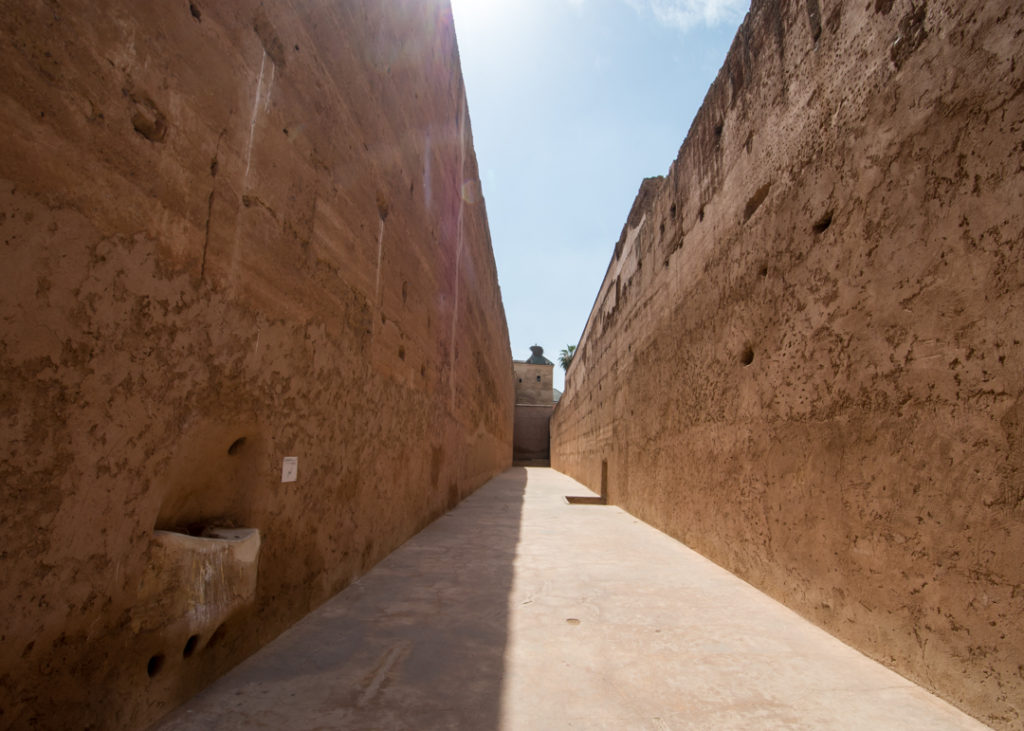
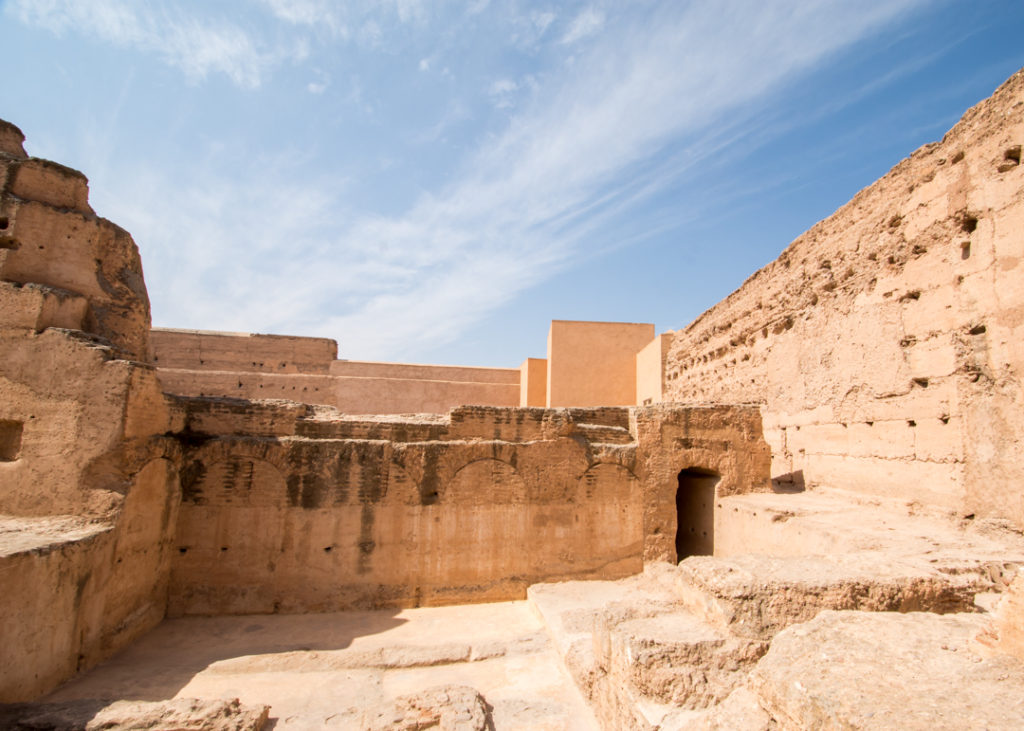
Don’t miss the flight of stairs in one corner of the courtyard which will take you up to the ramparts for a stunning panoramic view of El Badi Palace. It’s much better to marvel at the oasis from above, taking in the 295 feet / 90 meters length of the pool and the four sunken orange orchards.
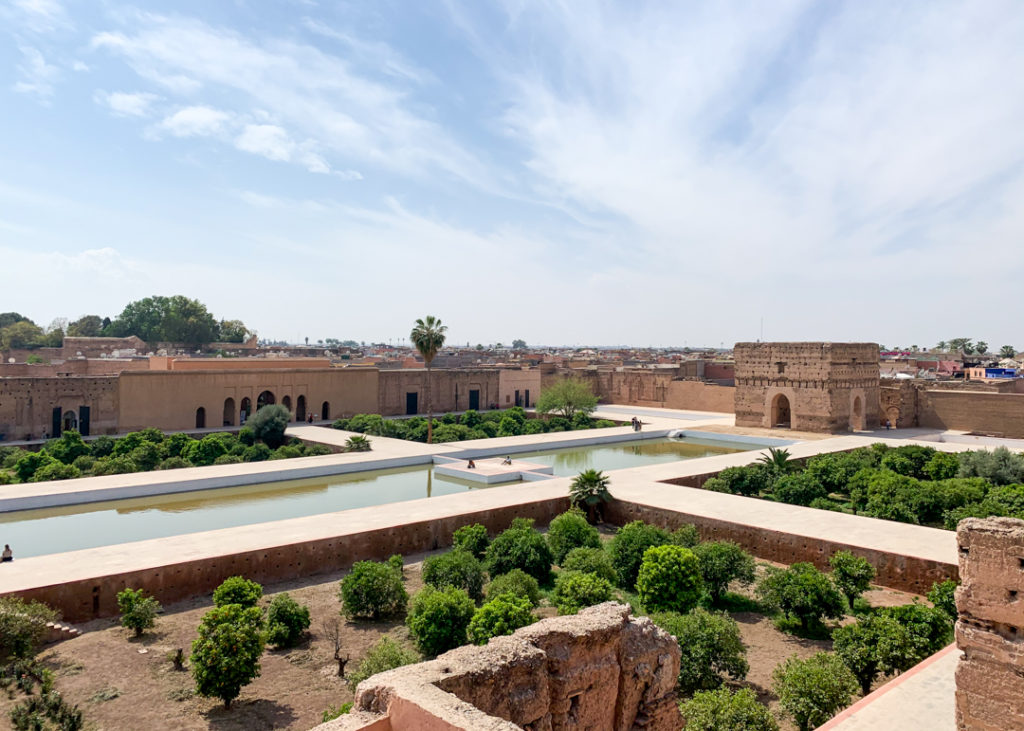
Turn around and you’ll have the Marrakech skyline in full view.
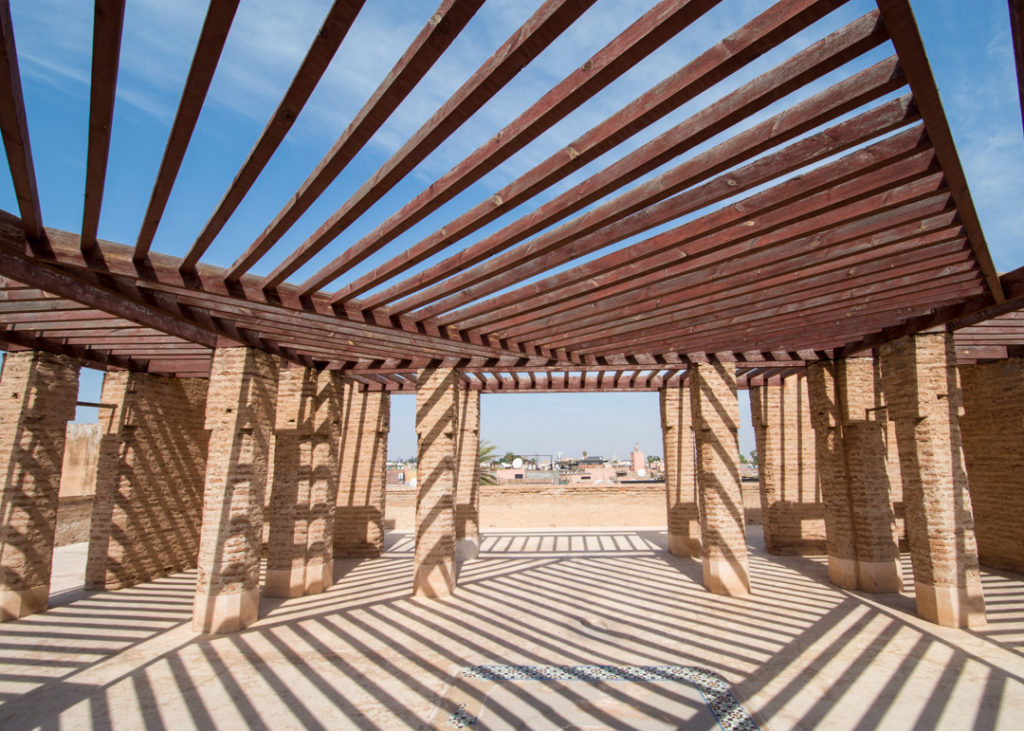
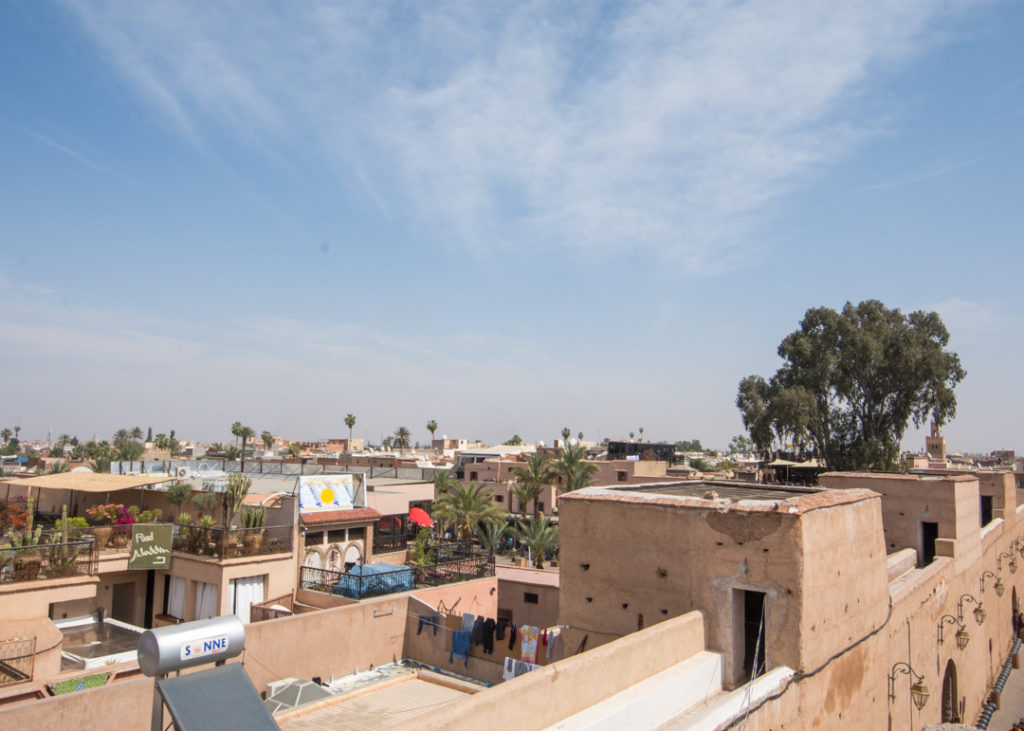
Time to leave the past behind and check out the modern side of Marrakech. Jump in a cab (you can also walk but we were hungry!) and head northwest to Gueliz (the new town) which was built by the French when Morocco was a protectorate between 1912 and 1956. Here the streets are wider, the restaurants and shops contemporary, and there’s a vibrant art gallery scene in art deco buildings.
Grab lunch at Le Kilim, a stylish and crimson-clad recent addition to the neighborhood with a pleasant wraparound terrace.
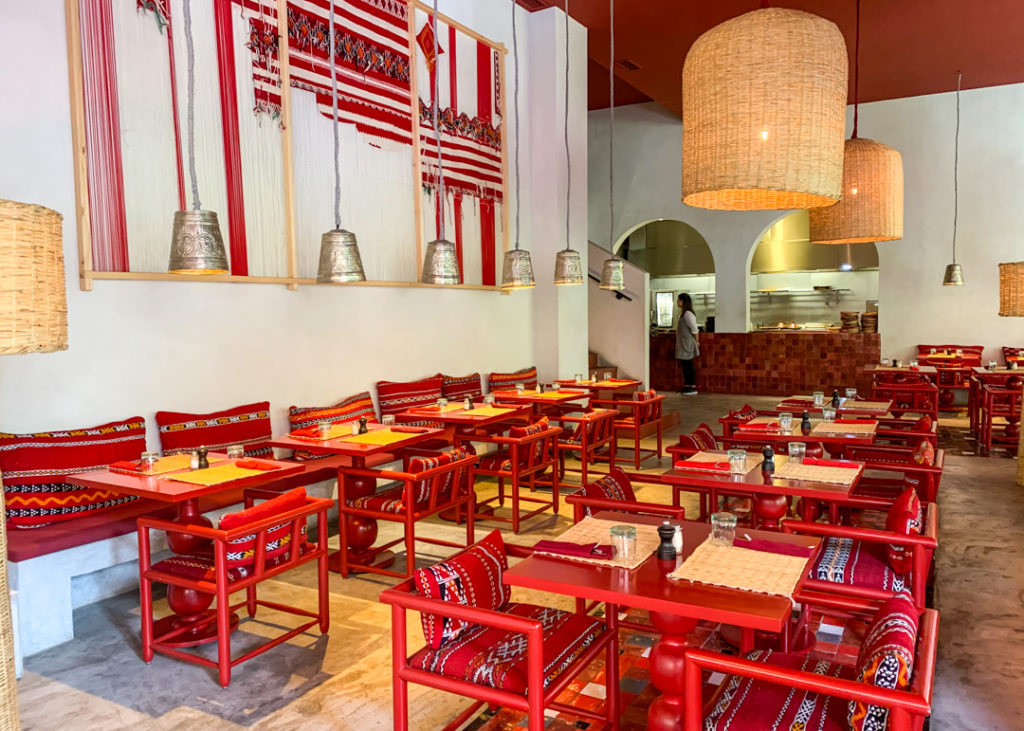
Since it’s the sister restaurant of famous Nomad, Le Jardin and Café Des Épices in the medina, you can expect the same level of vibrant mix of Moroccan cuisine with international flair.
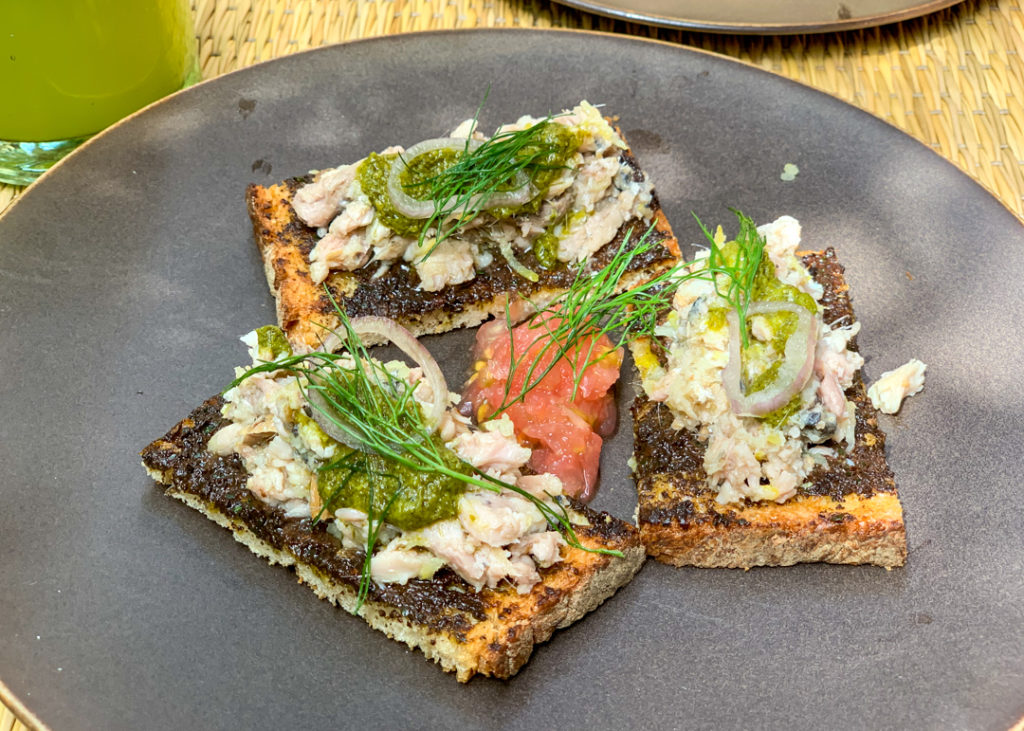
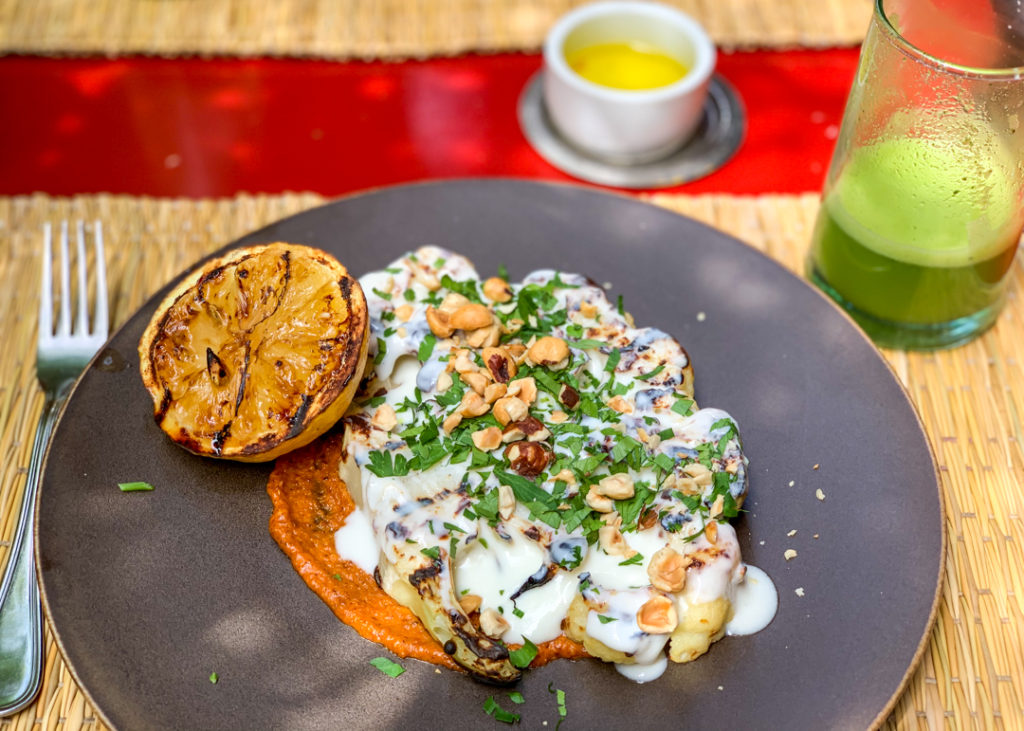
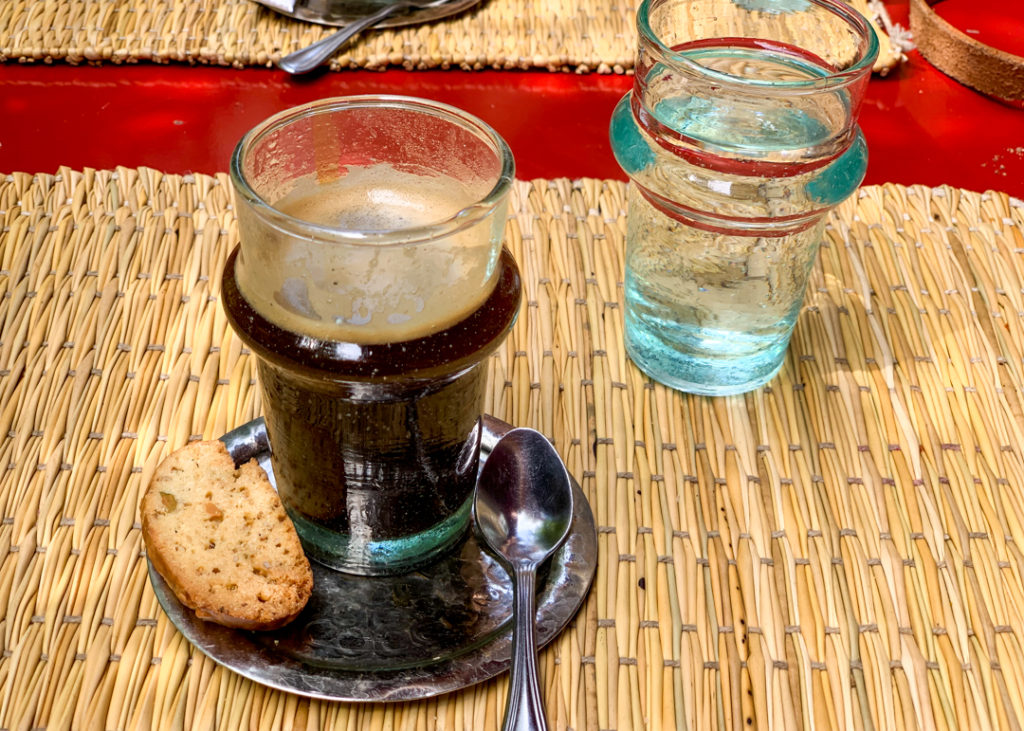
Although the medina is the best place to shop for rugs and crafts in general, the sheer number of them can be intimidating to first-time visitors. Gueliz has a number of wonderfully curated little boutiques that make browsing a lot more enjoyable and showcases some of the more modern designs.
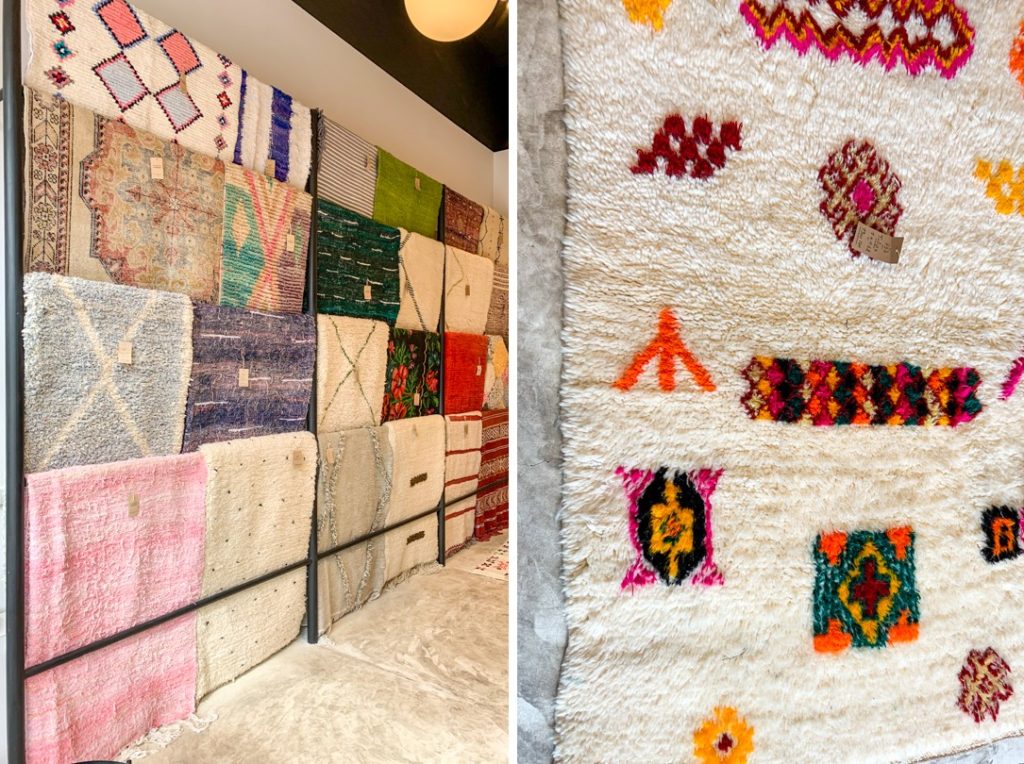
You’ll also find the neighborhood to be a lot more relaxed than the rest of the city (a certain French laissez-faire perhaps?) which means sipping a cold beer or a nice glass of wine is much easier. Cramped and totally charming, Le 68 is the wine bar you want to drop by for a glass of Moroccan or international wine and perhaps a charcuterie plate.
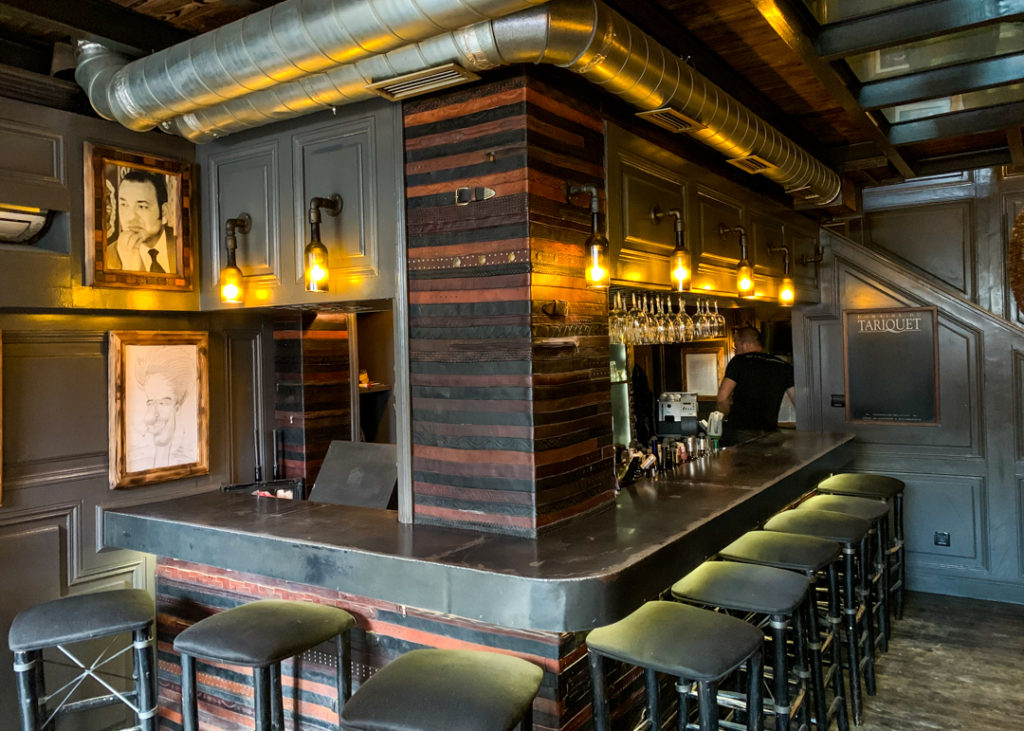
Hop to the next neighborhood east of here to immerse yourself into the life of one of the greatest fashion designers: Yves Saint Laurent. While very much associated with Parisian haute couture, he spent most of his time in Morocco.
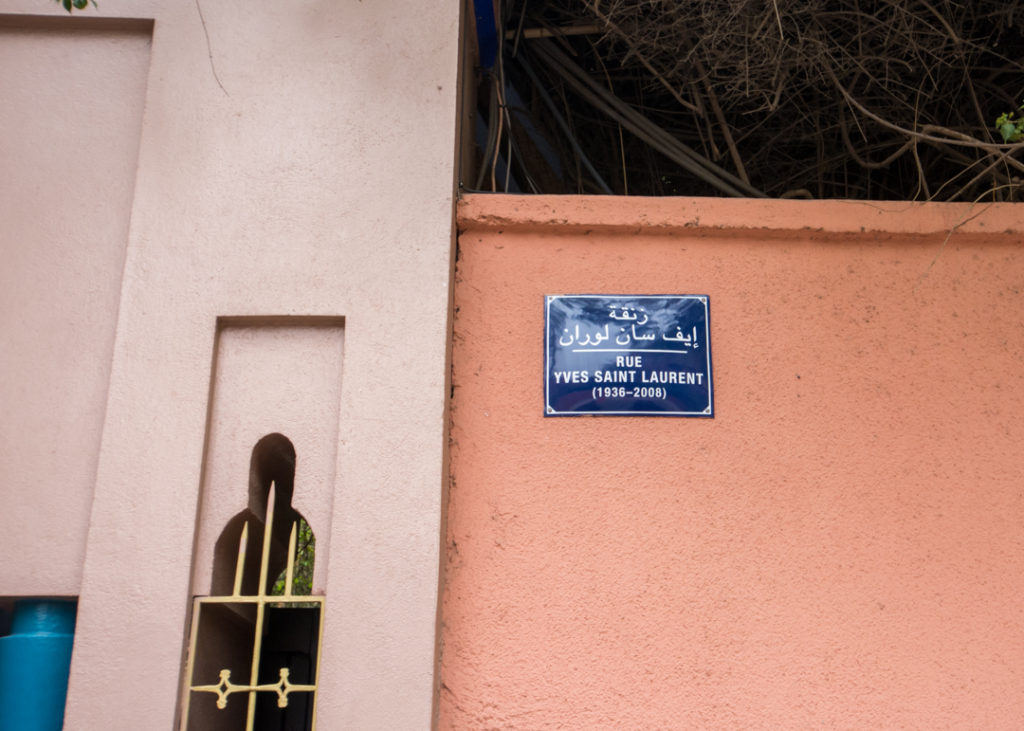
The hugely popular Musée Yves Saint Laurent opened in 2017 and is one of the city’s only examples of contemporary architecture. Unfortunately closed due to COVID, we could still marvel at the striking brick design on the façade, meant to evoke the texture of woven fabric.
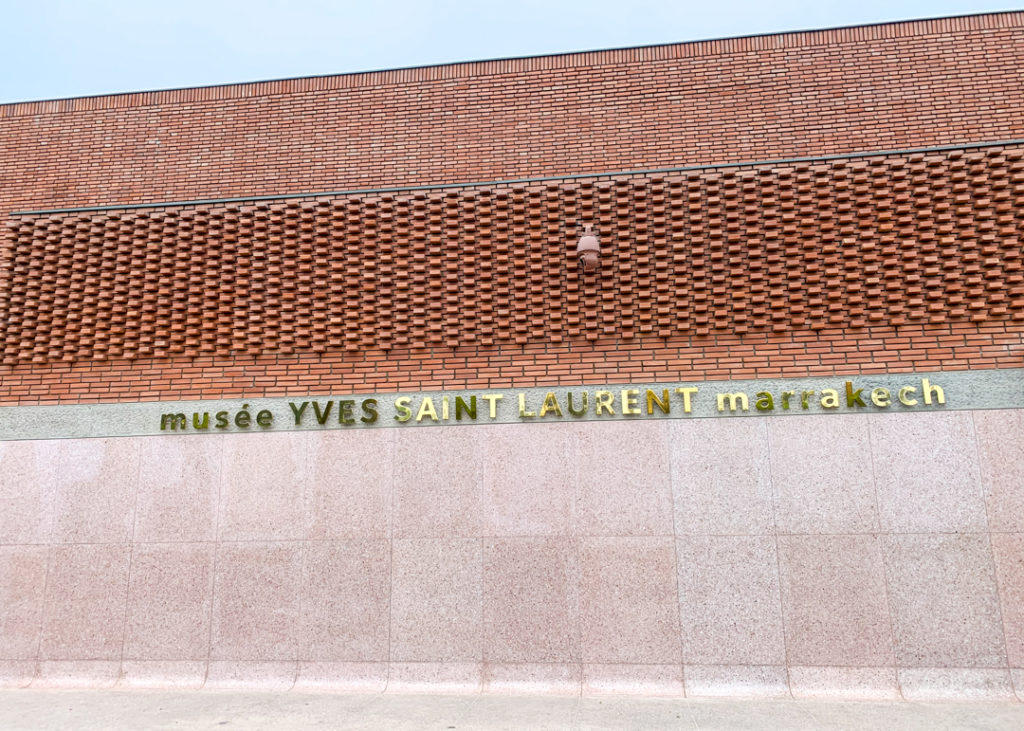
Next door, you’ll find the entrance to the Majorelle Gardens, a haven of peace and colors that was acquired and restored by the French designer in 1980.
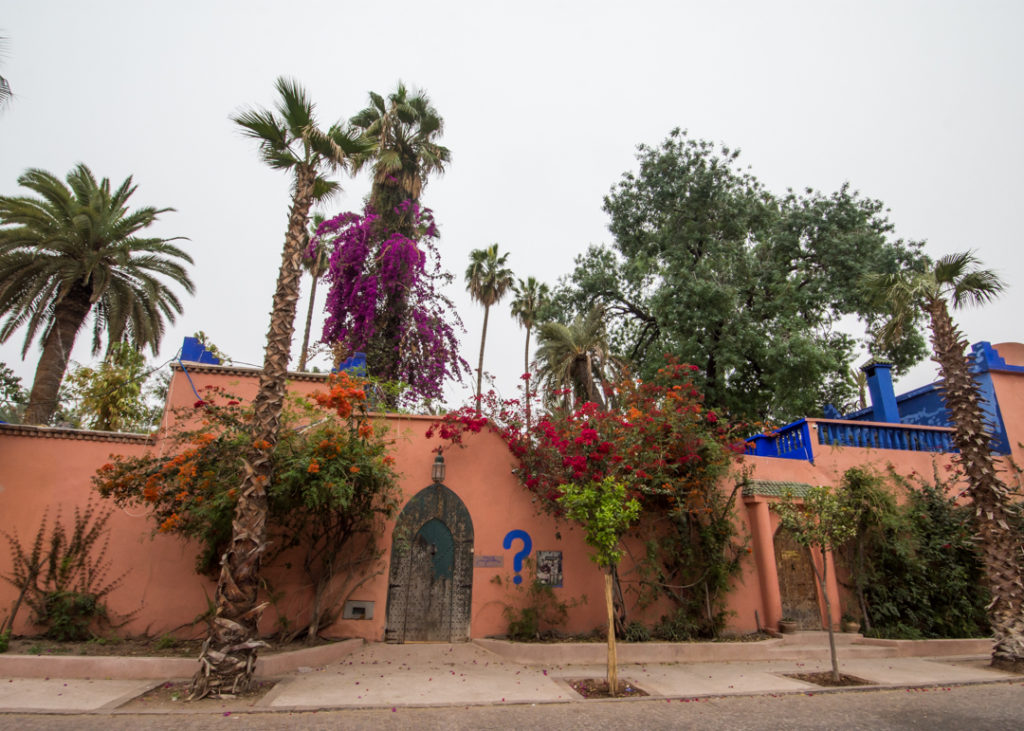
Designed by famed French painter Jacques Majorelle over nearly four decades (1920s-1960s), the expansive gardens are filled with an impressive collection of exotic species of plants and unique trees collected during his numerous travels.
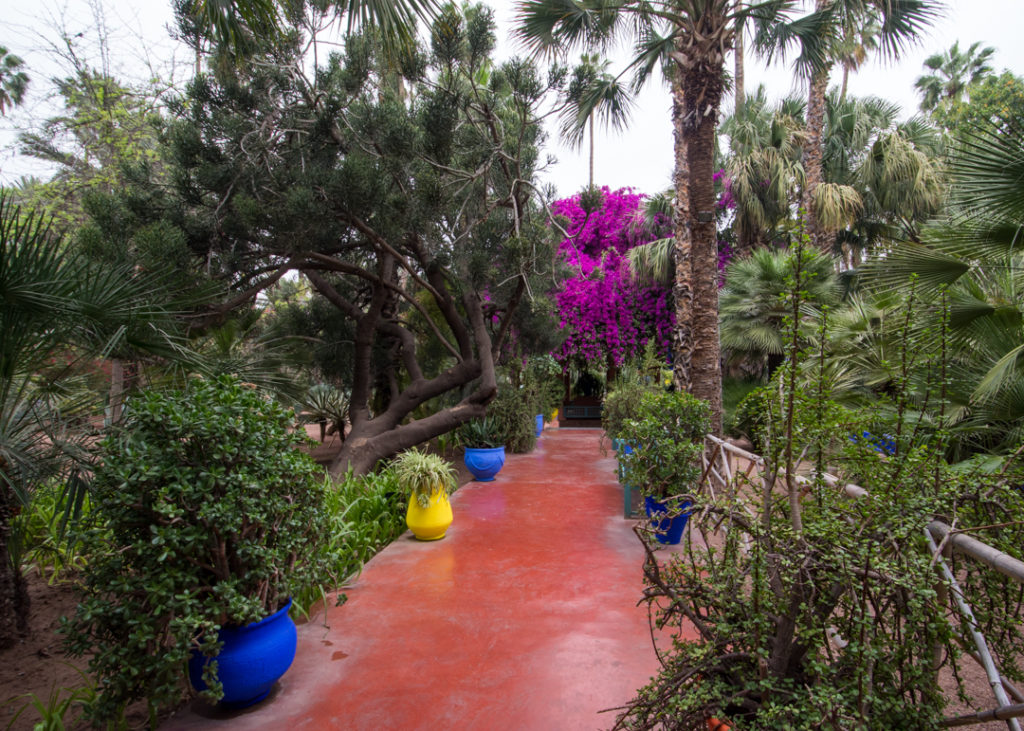
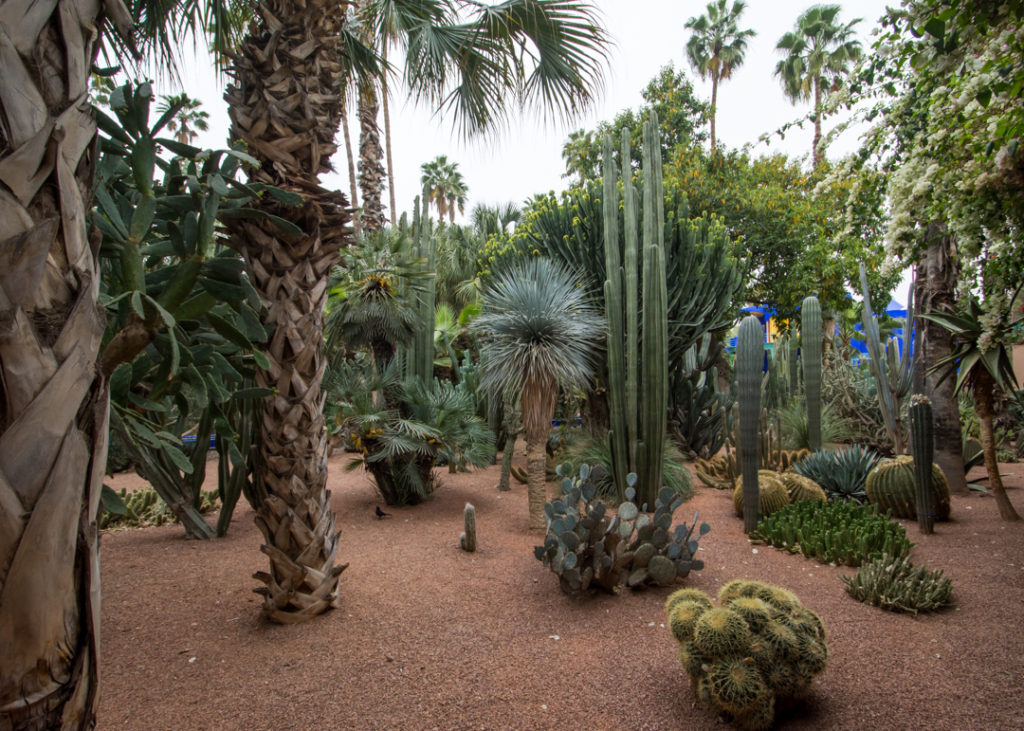
Each one is carefully displayed to emphasize its singular beauty. Everywhere you look you catch a perfectly harmonious tableau telling you clearly that you’re not in a botanical garden but in an artist’s home!
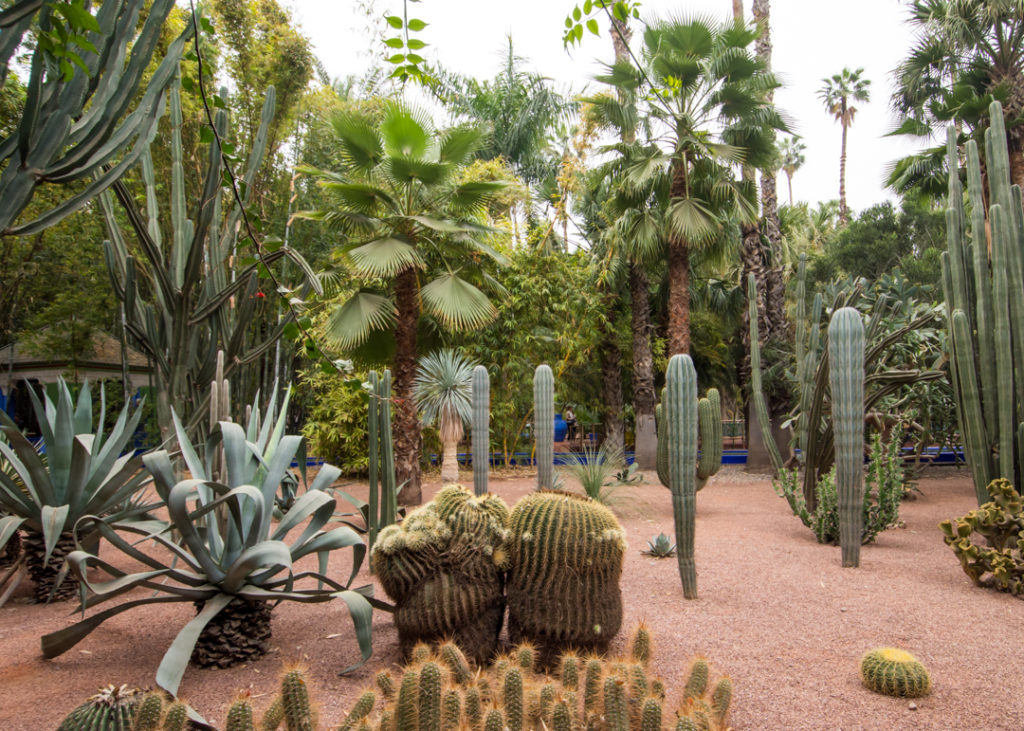
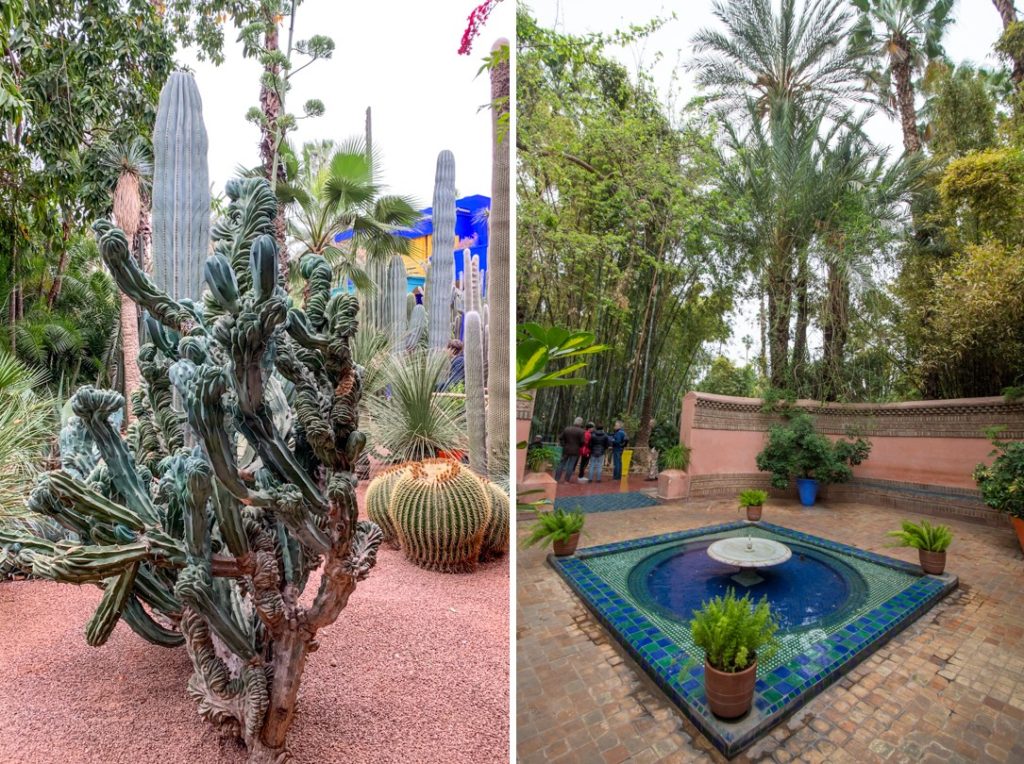
Pools, streams and fountains add to the charm as well as the numerous birds you’ll hear chirping.
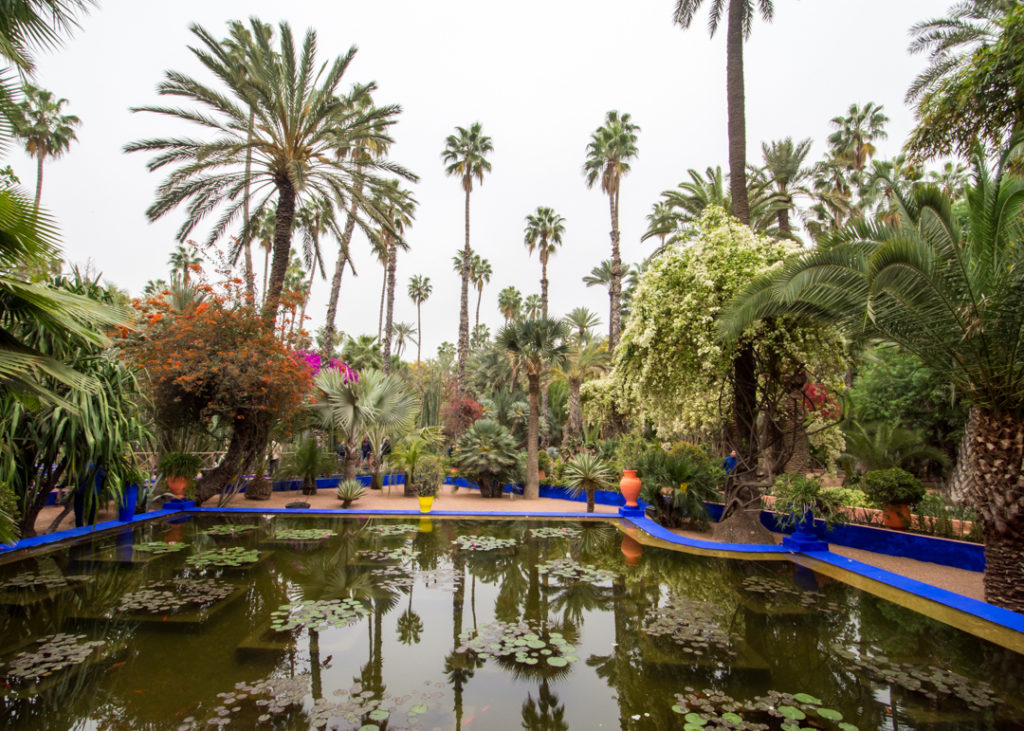
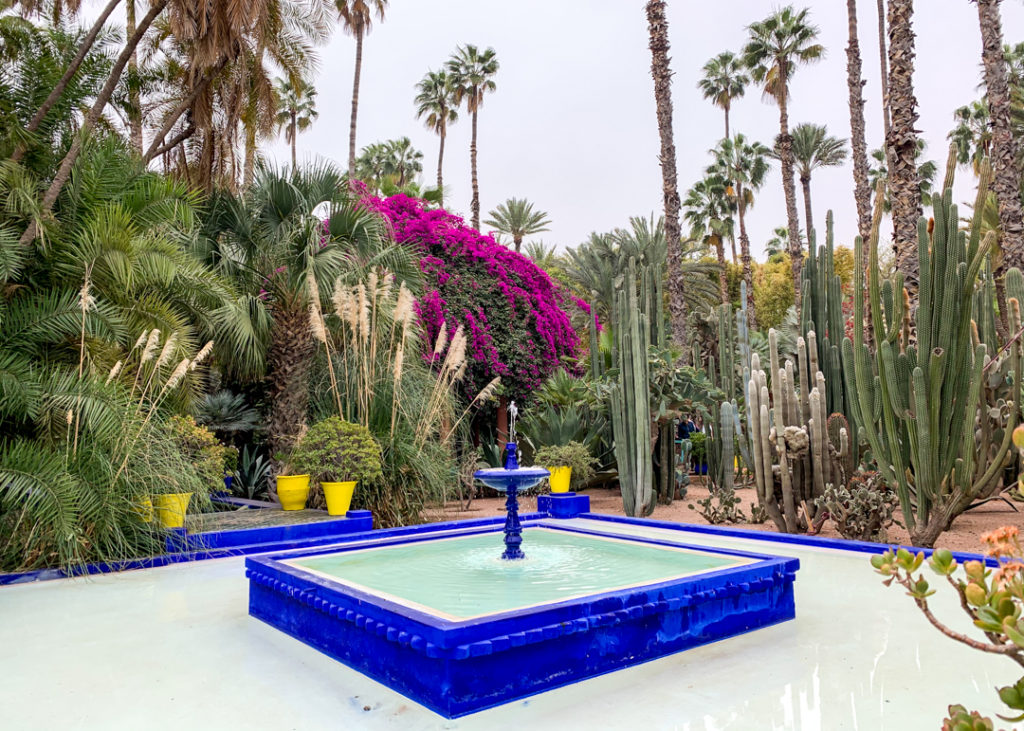
The artist’s studio, painted in the now iconic electric ‘Majorelle blue’, is also home to the Berber Museum and is where you’ll find a boutique to splurge on fashion accessories.
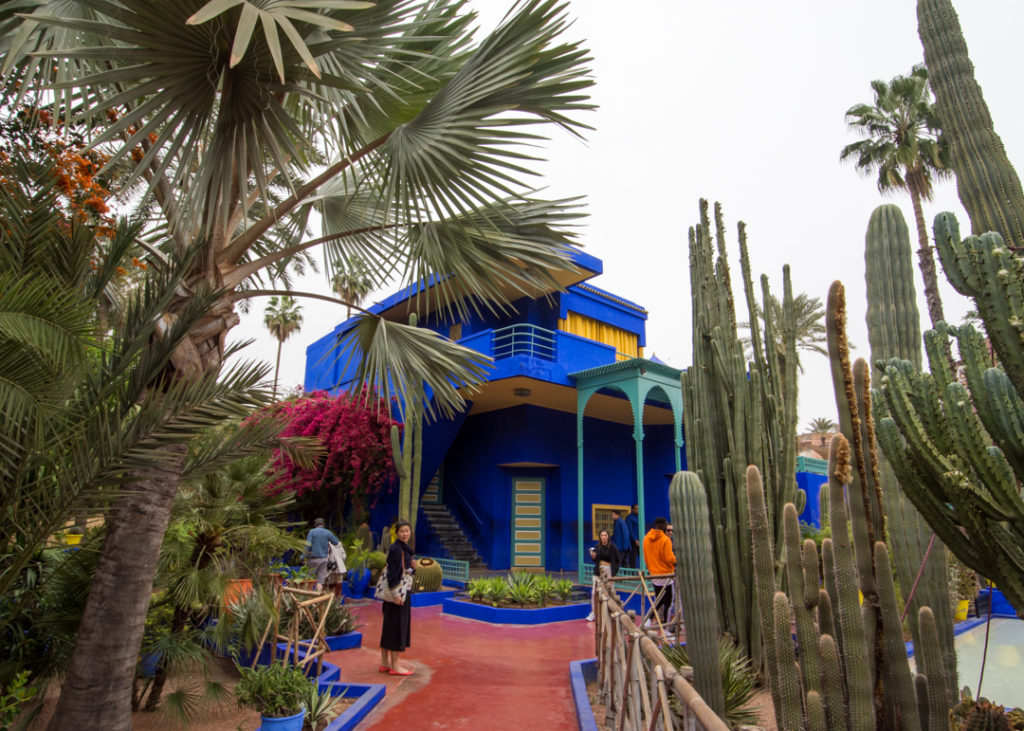
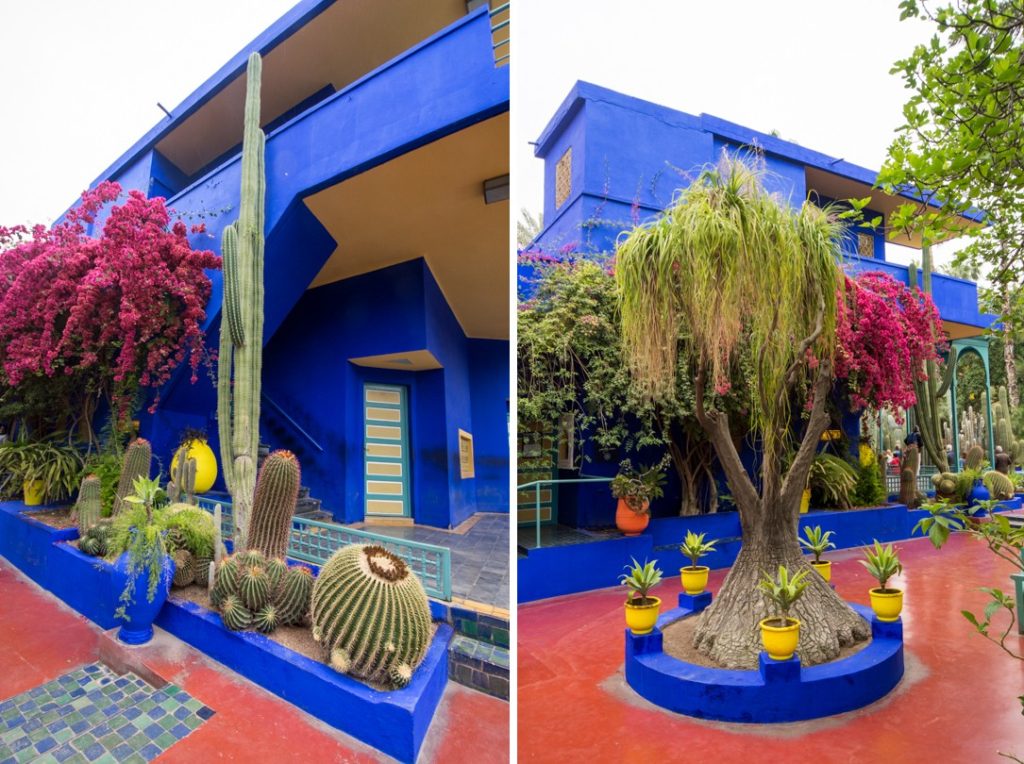
Colors like these are sure to make you smile, even on the dreariest days and might make you reconsider your love of neutrals…at least for some backyard inspo.
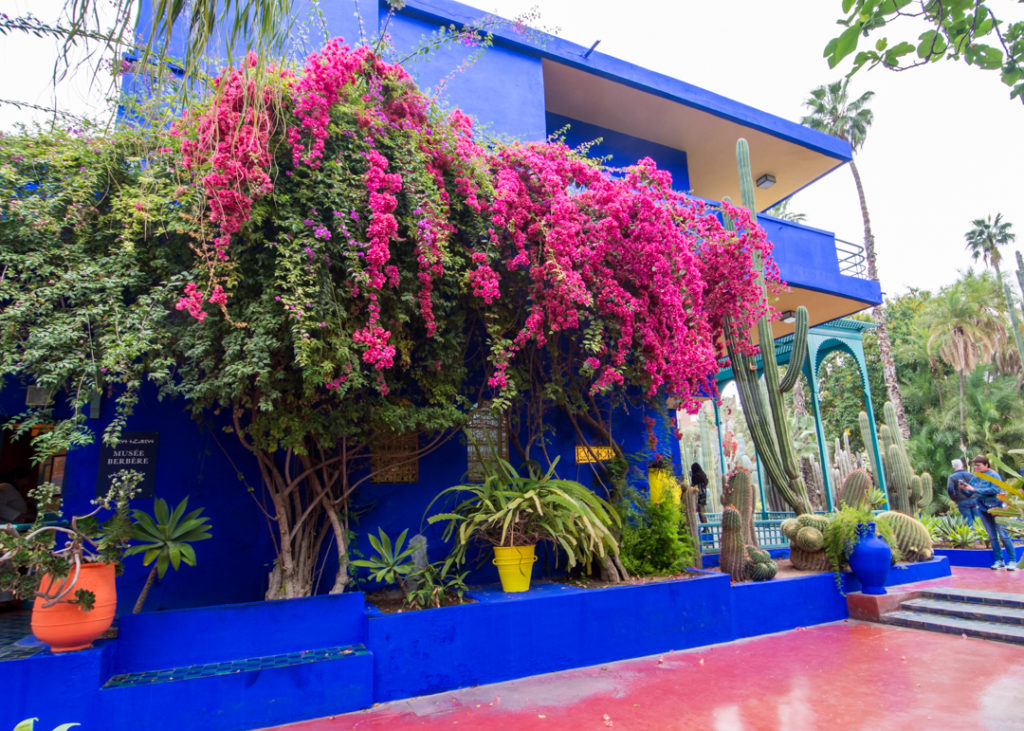
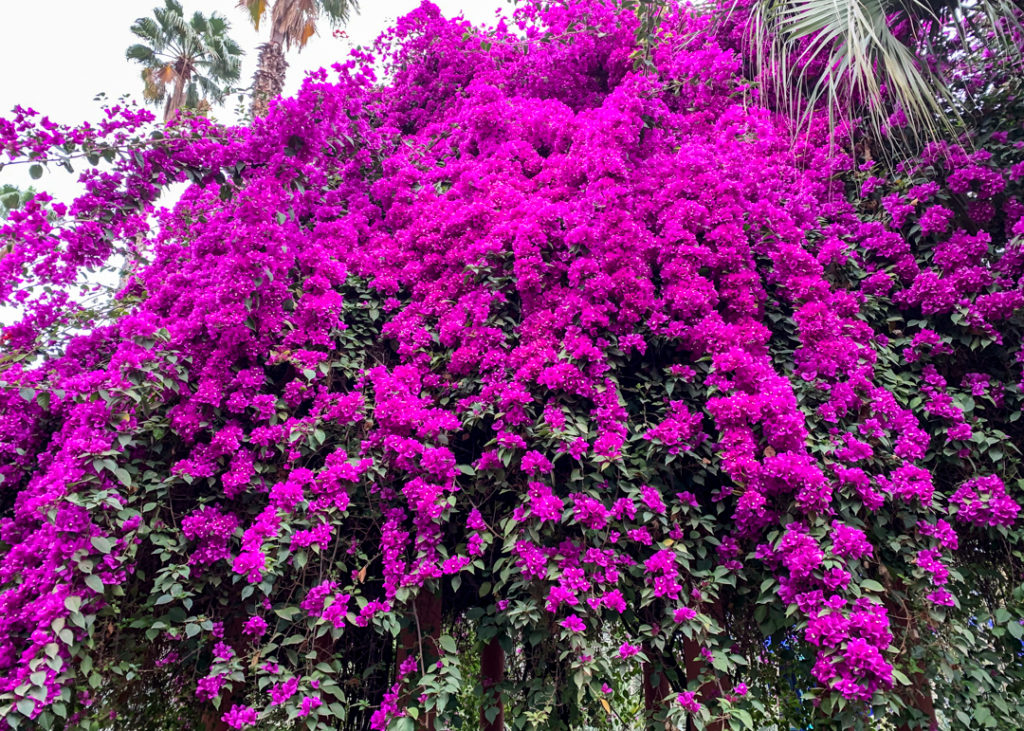
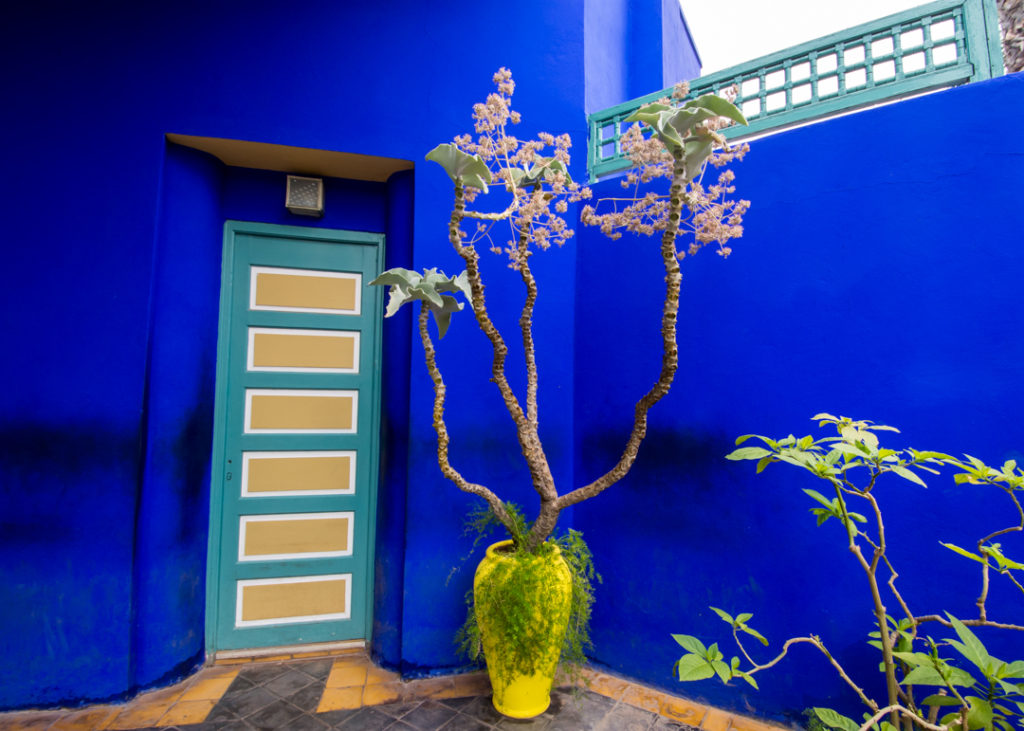
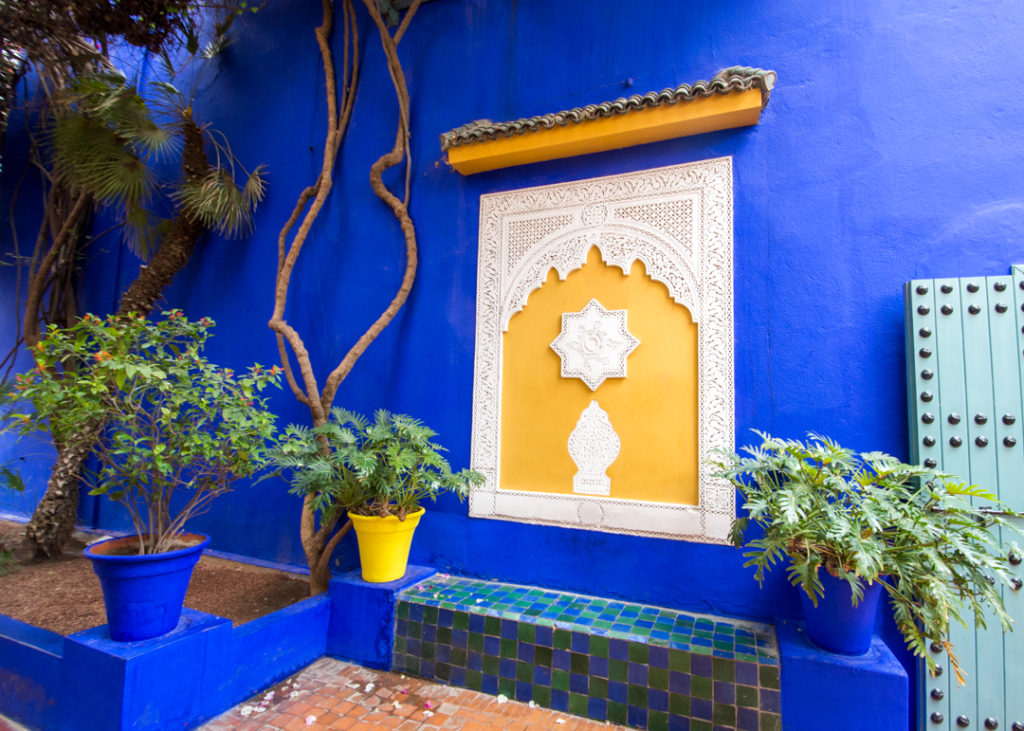
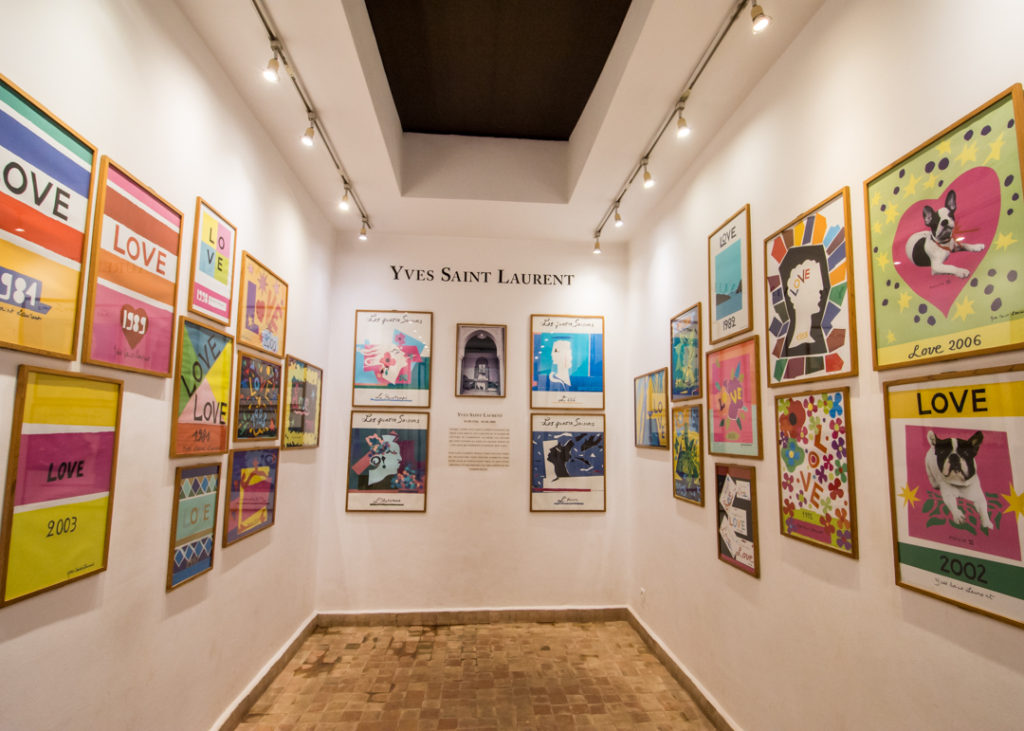
After such a busy day, the apex of happiness in Marrakech is retiring to the tranquility of a rooftop restaurant for the evening. There are many elevated perch throughout the city but one not to be missed is the terrace of the boutique hotel El Fenn. The luxury bohemian riad right inside the Medina is one of Marrakech’s most stylish and you surely will recognize some of its widely photographed interiors as you make your way to the top…
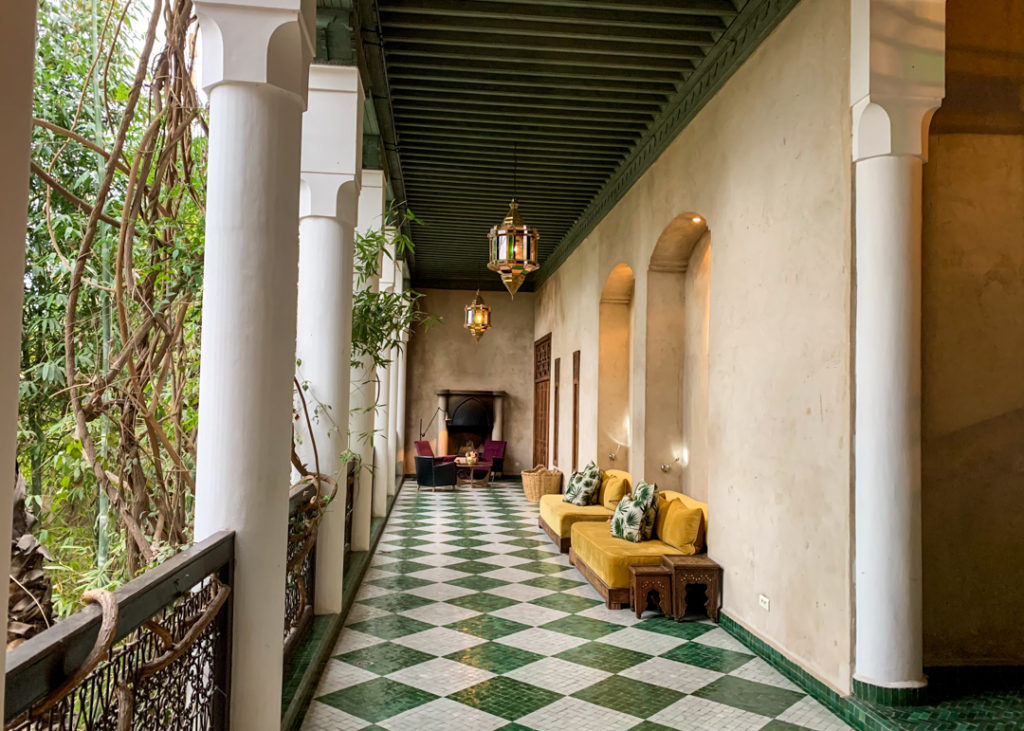
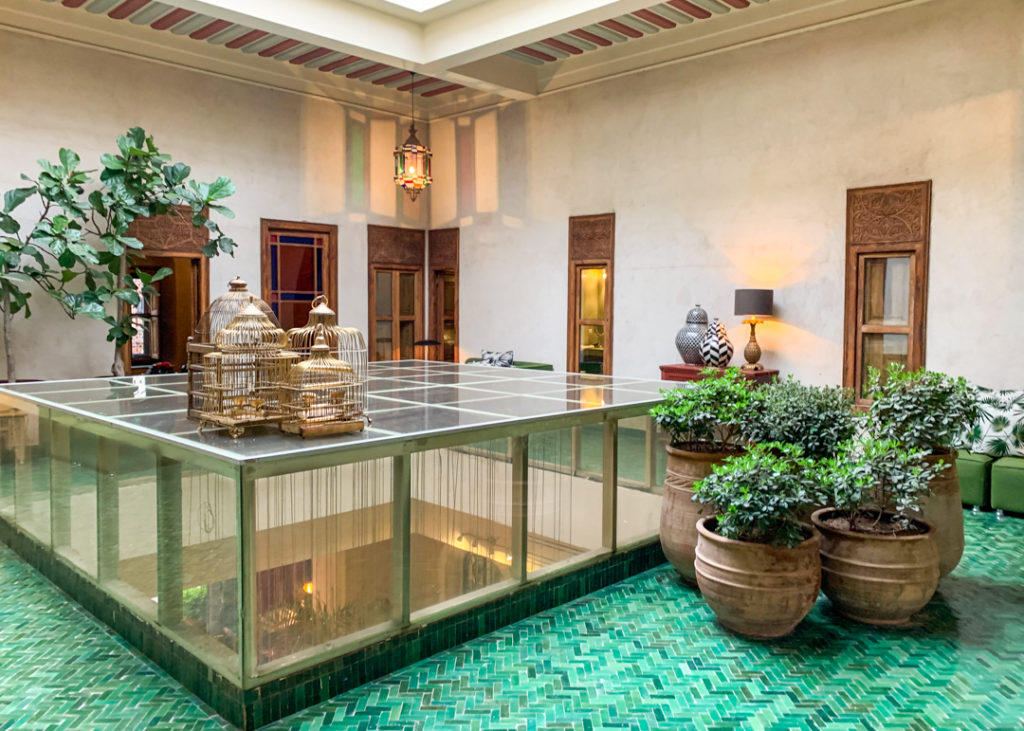
From a few stories up, the magnificent rooftop welcomes you with views as far as the Atlas Mountains, a close up of the Koutoubia Mosque, and a glimpse at a thousand rooftop patios and courtyards all around.
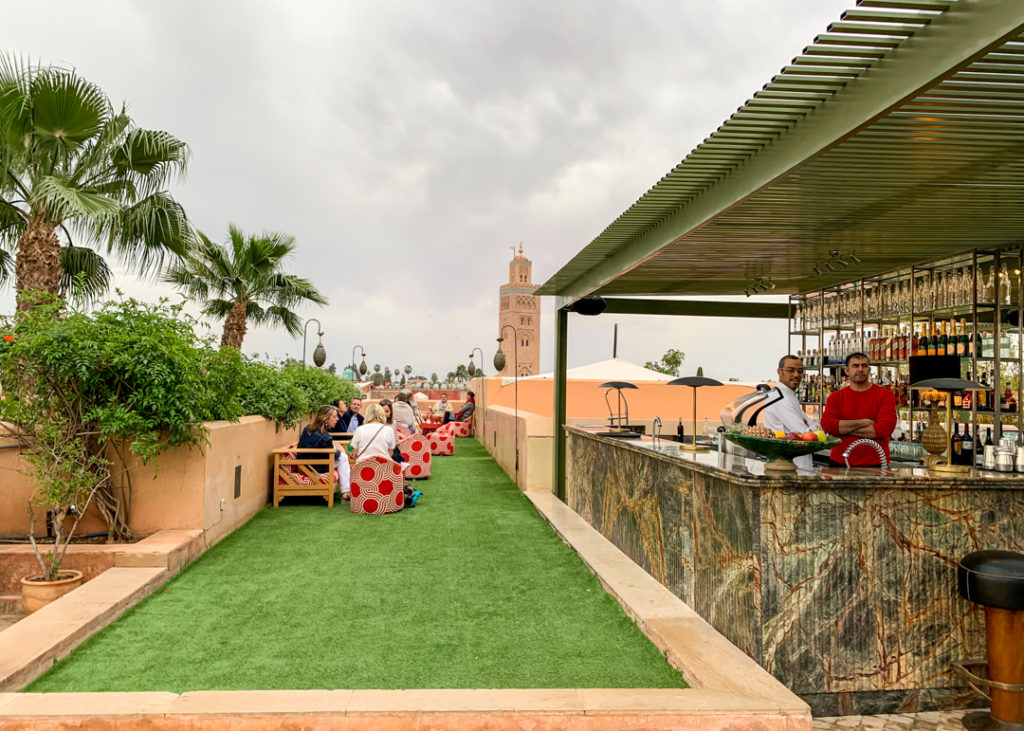
Make sure you time your dinner reservation to be here for the sunset spectacle and settle comfortably into one of the oversize banquettes with a bottle of rosé. Once again, drowning yourself in pink seems like the only acceptable way to finish the day and welcome a very special evening.
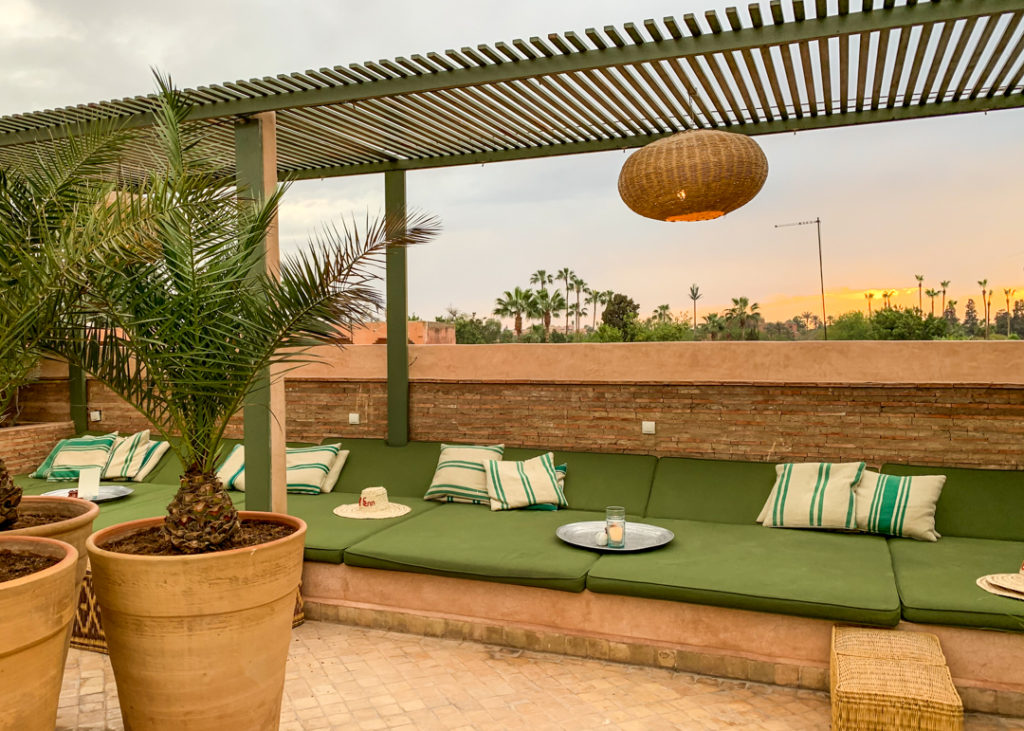
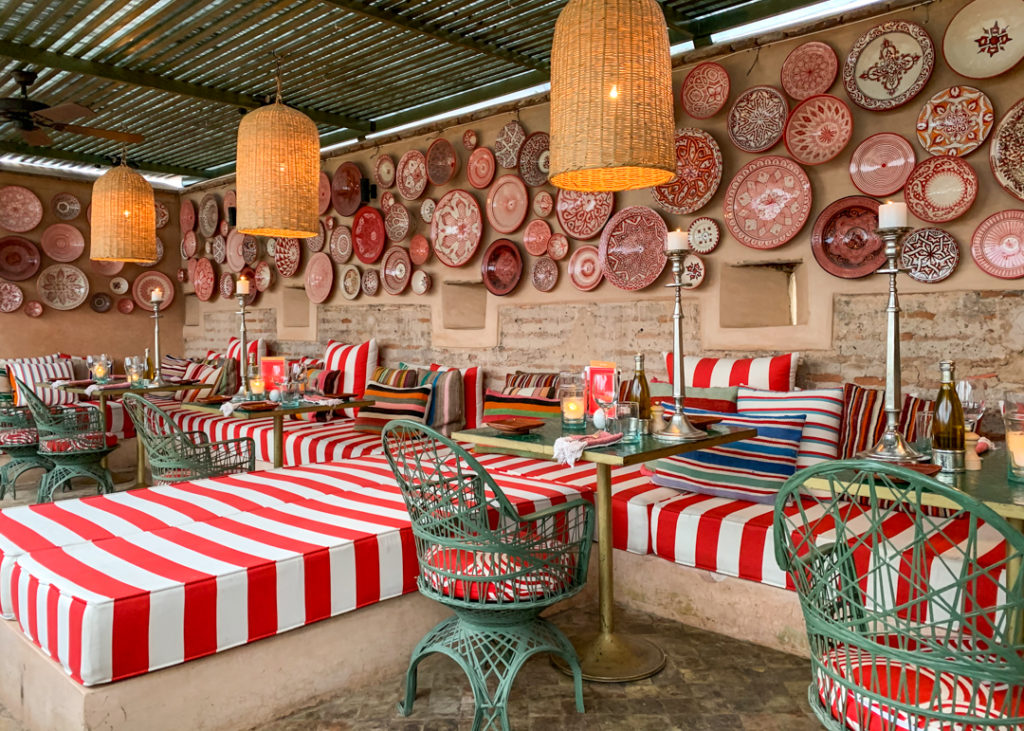
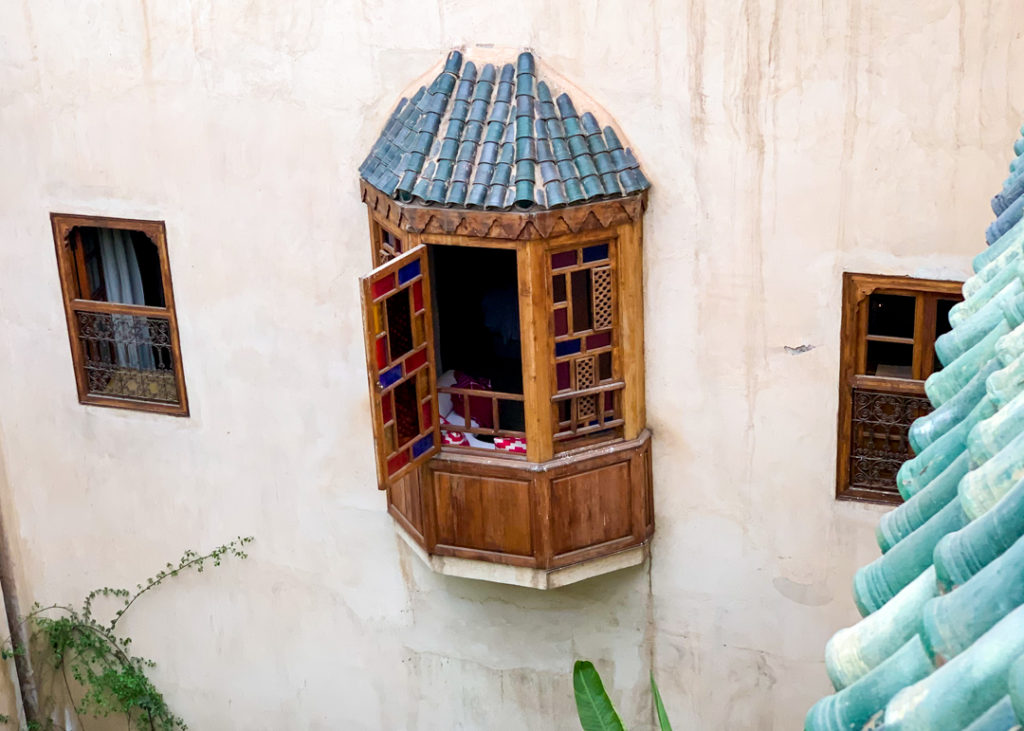
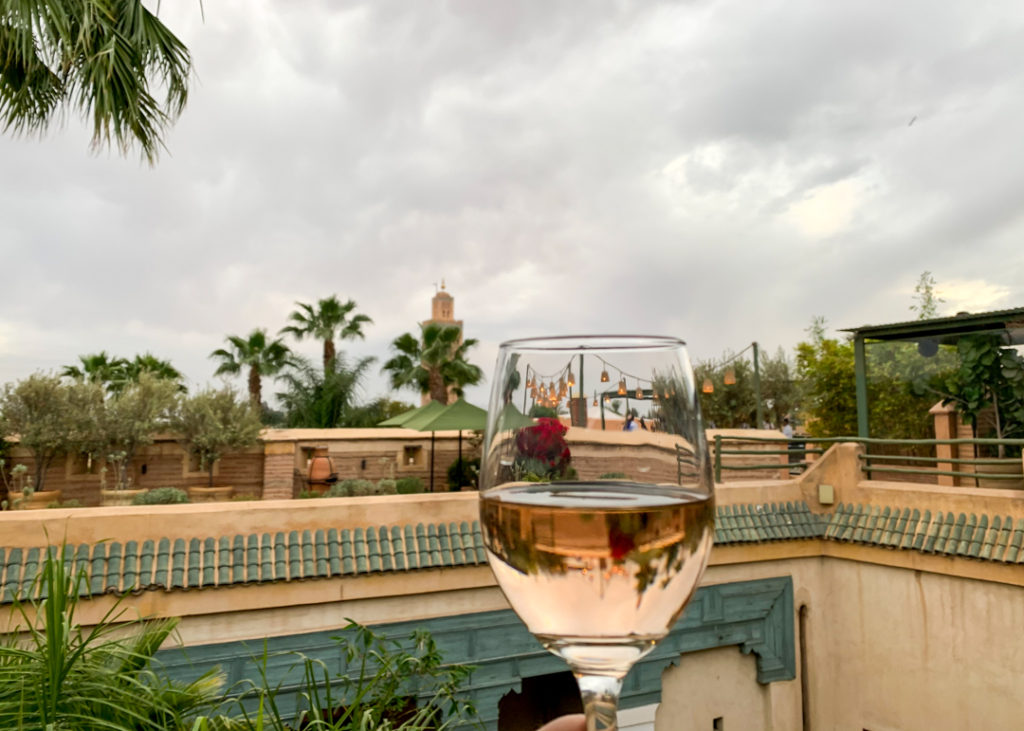
The daily-changing menu is based on what’s in season from El Fenn’s organic garden suppliers so starting with the salad sampler is a wise choice here for refreshing and deep flavors.
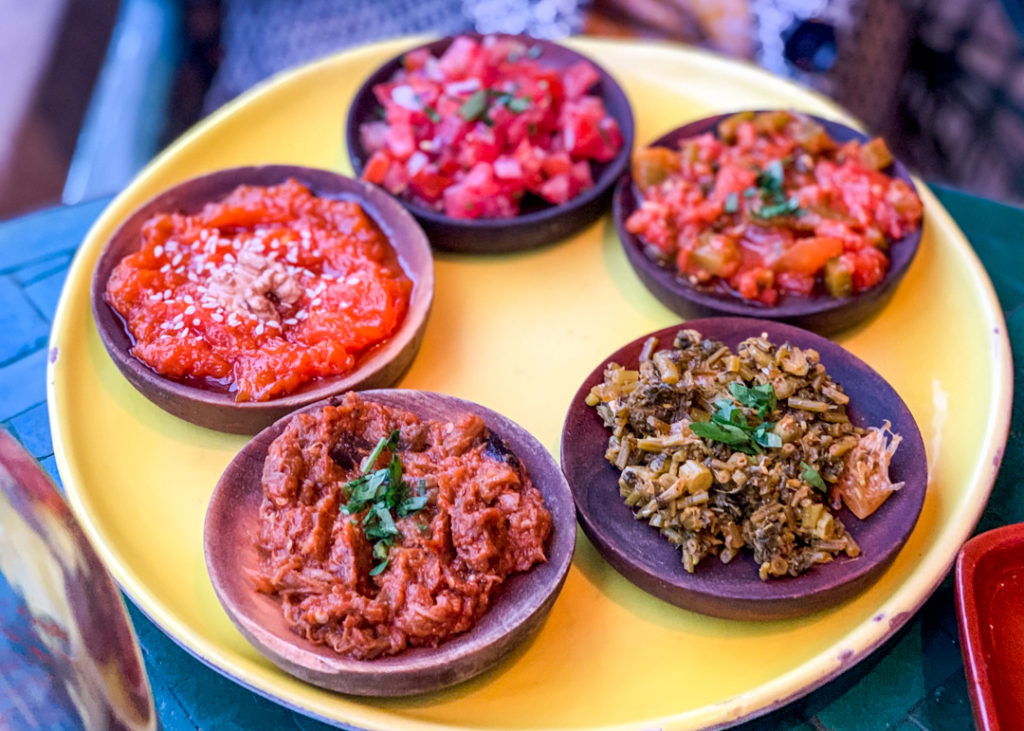
Main courses are a mix of modern Mediterranean and Moroccan fare – hearty and perfect complement to that bottle of rosé that is undoubtedly emptying at an alarming rate.
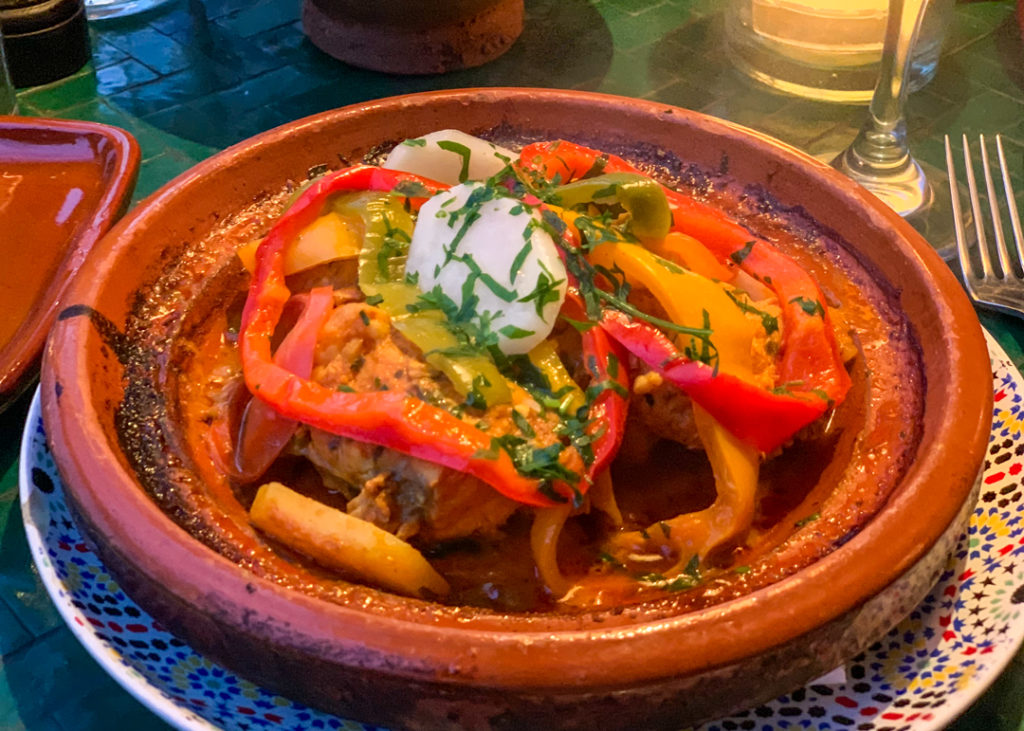
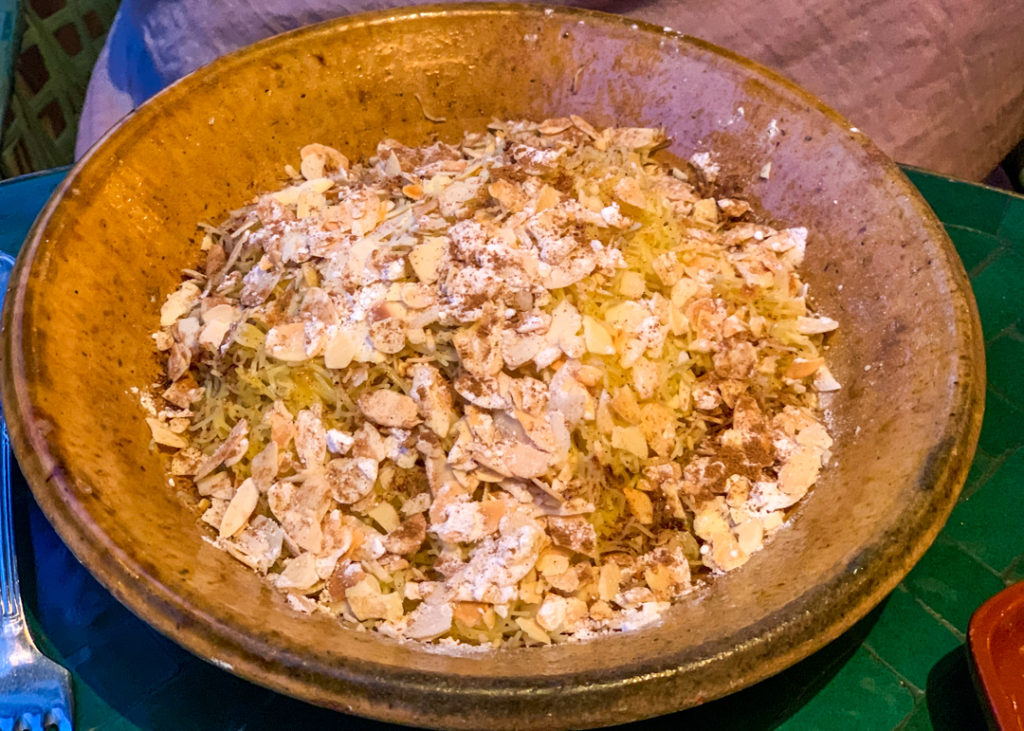
Refined sweets under the stars put an end to the feast but not the enchanting night which must continue at one of the bars.
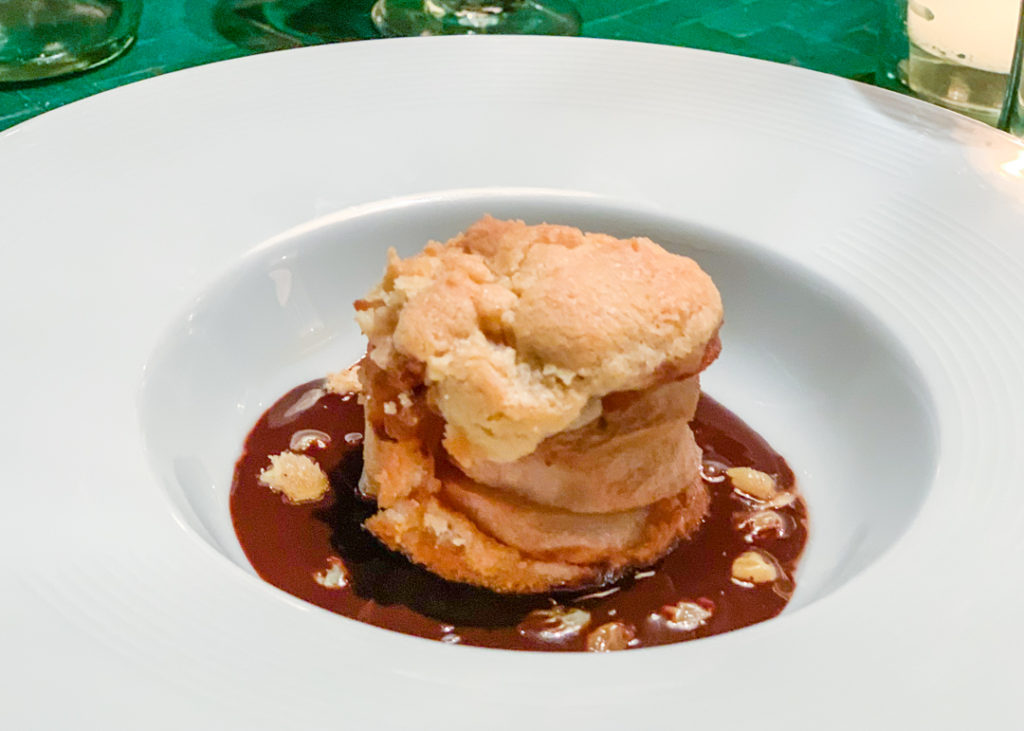
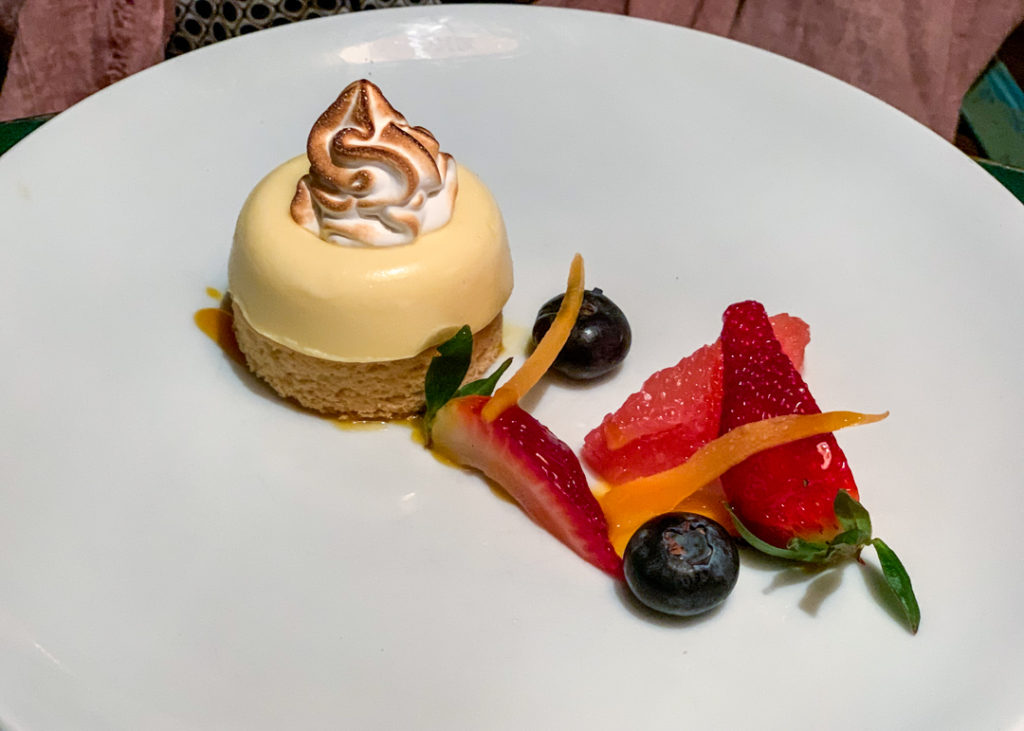
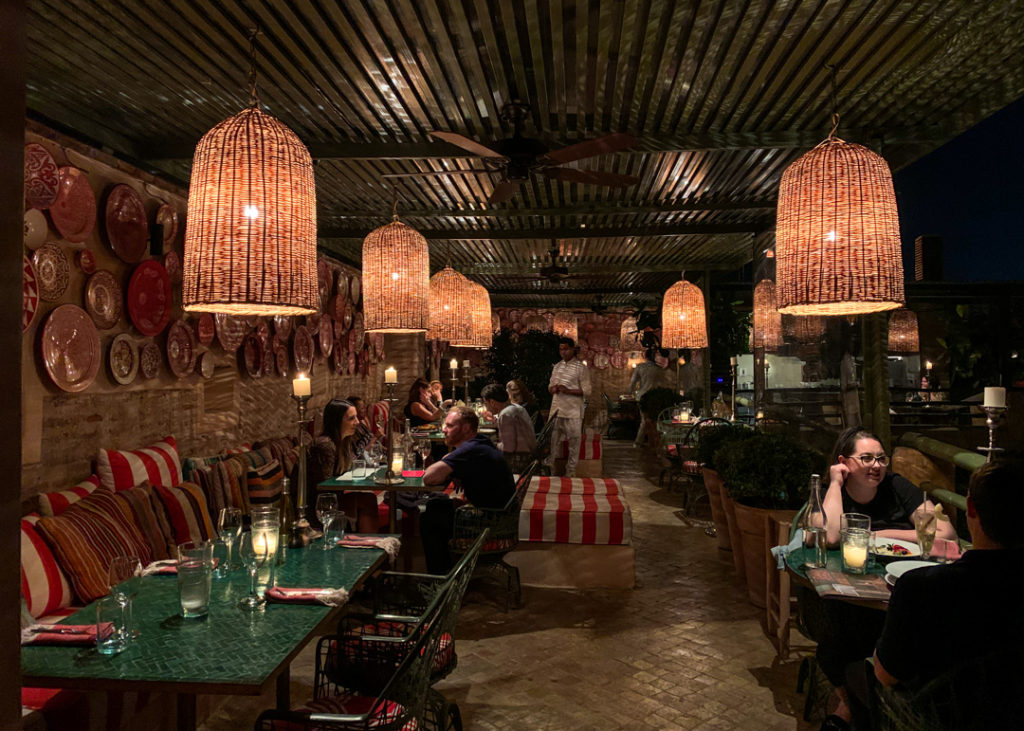
The splashes of cherry red are even more dramatic against the dark sky and you’ll find it hard to leave such a vibrant ‘garden party’ as you sip one last cocktail comfortably slumped over a pile of cushions.
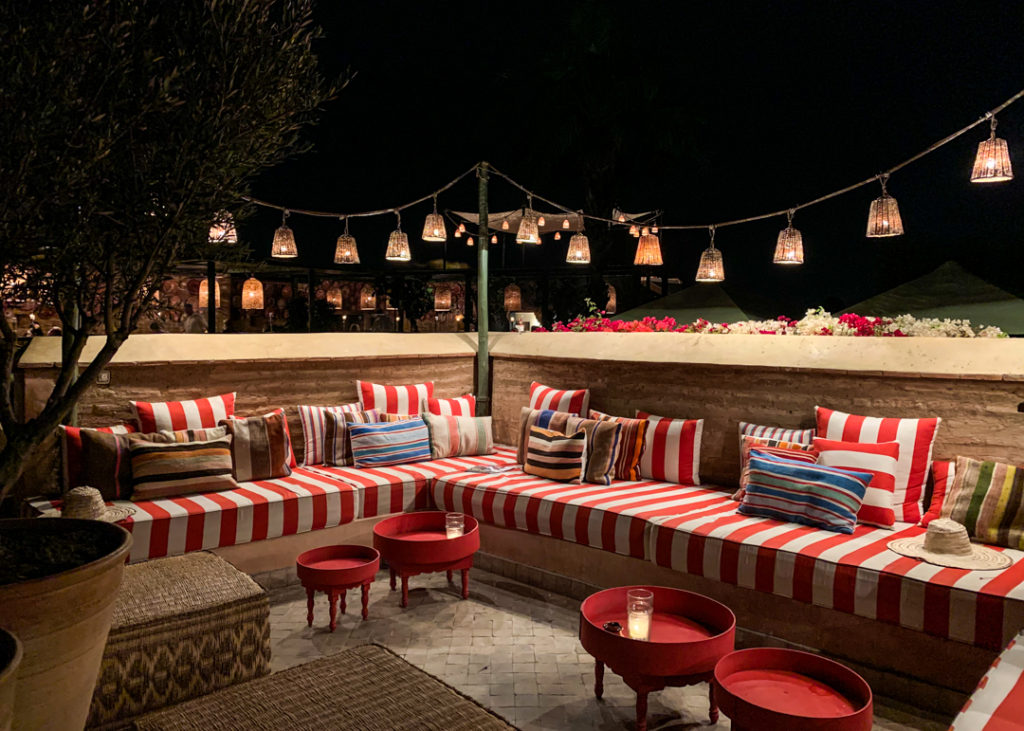
Slowly make your way down to see an entirely new side of the Riad. Few things say “Marrakech” quite so evocatively as the soft glow and dancing shadows from beautifully ornate lanterns, and tonight they are magnificent. Intimate corners appear everywhere, inviting you for yet one more chat or a quiet moment of contemplation.
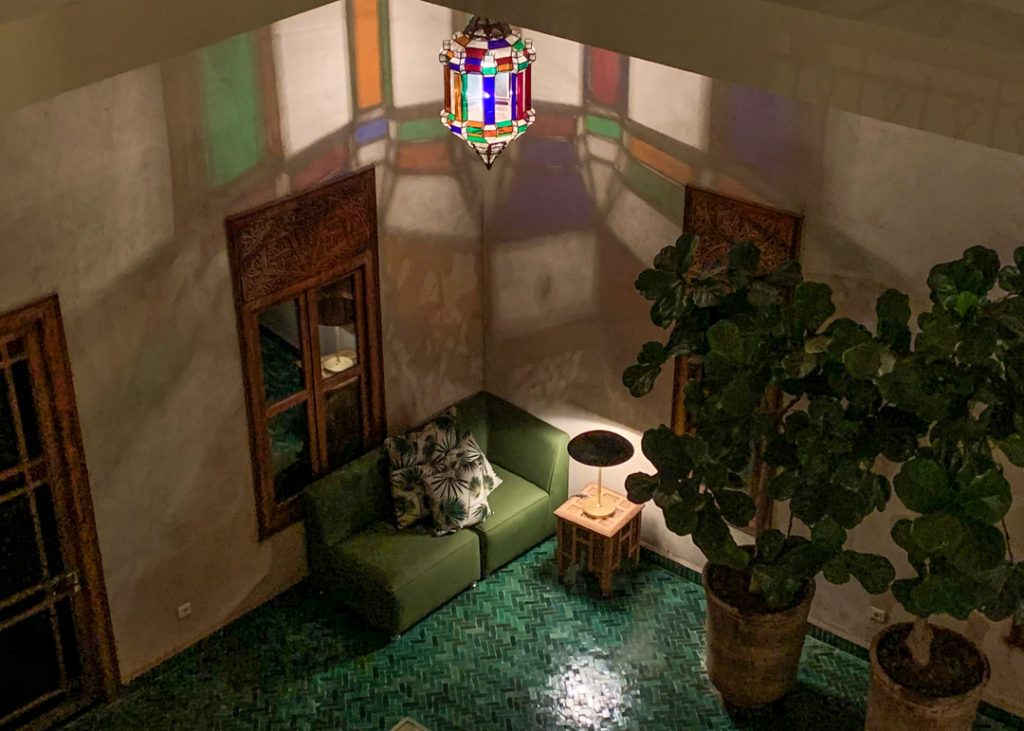
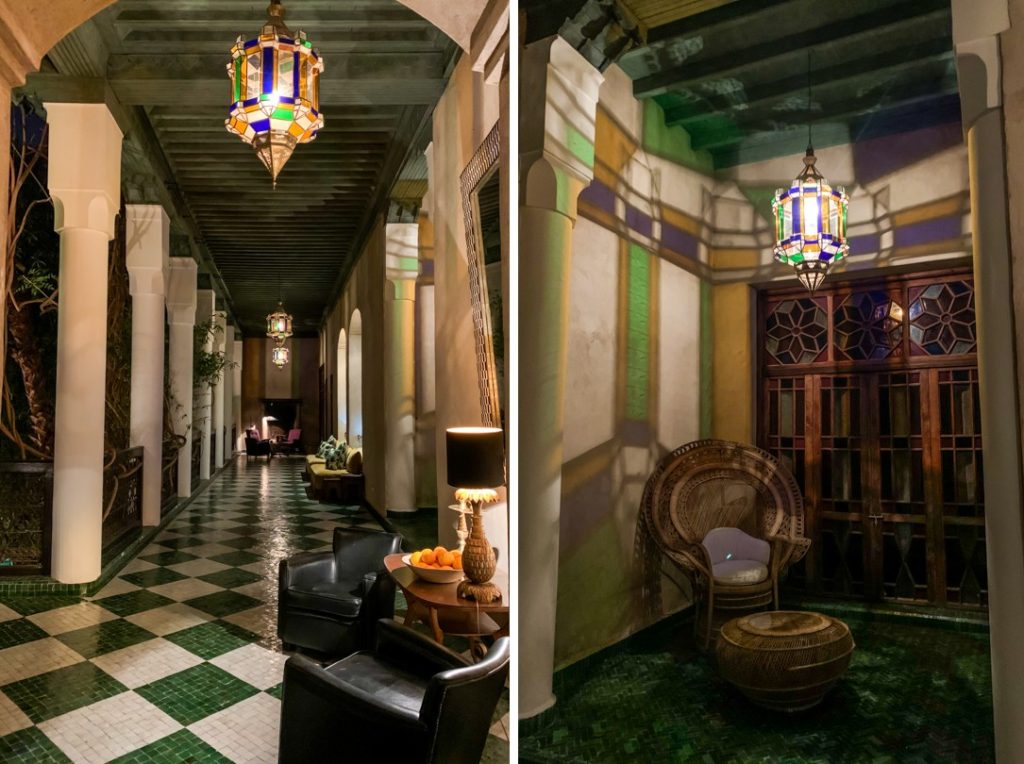
A sensually lit courtyard with a marble fountain indicates you’ve arrived on the ground floor and slows you down some more. Maybe one last drink?
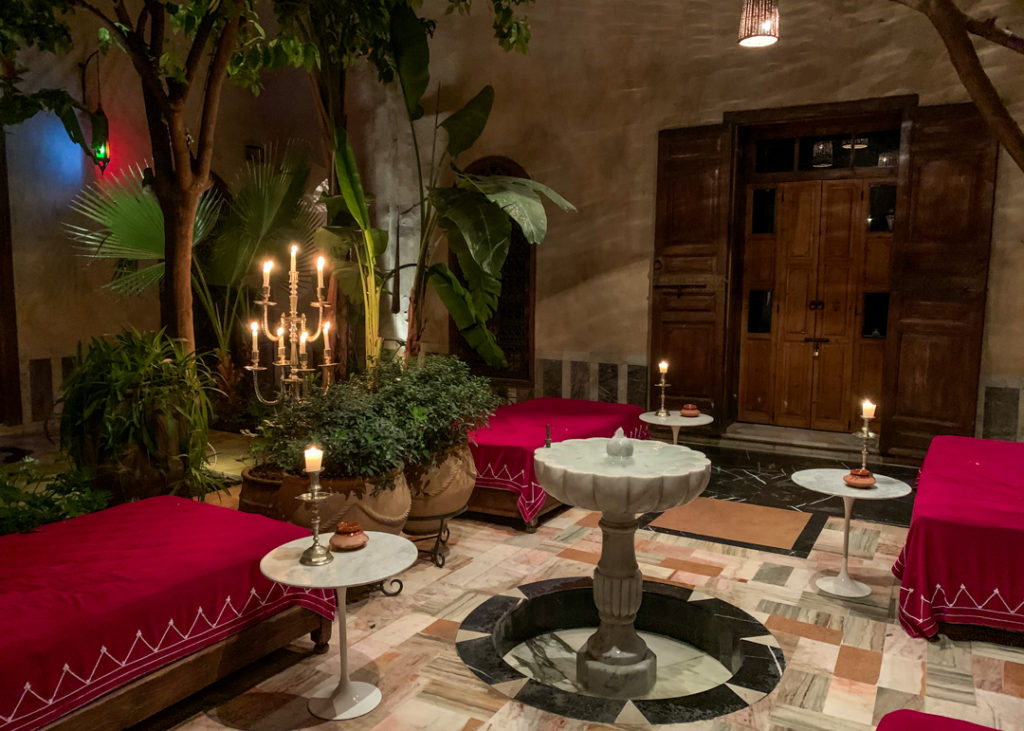
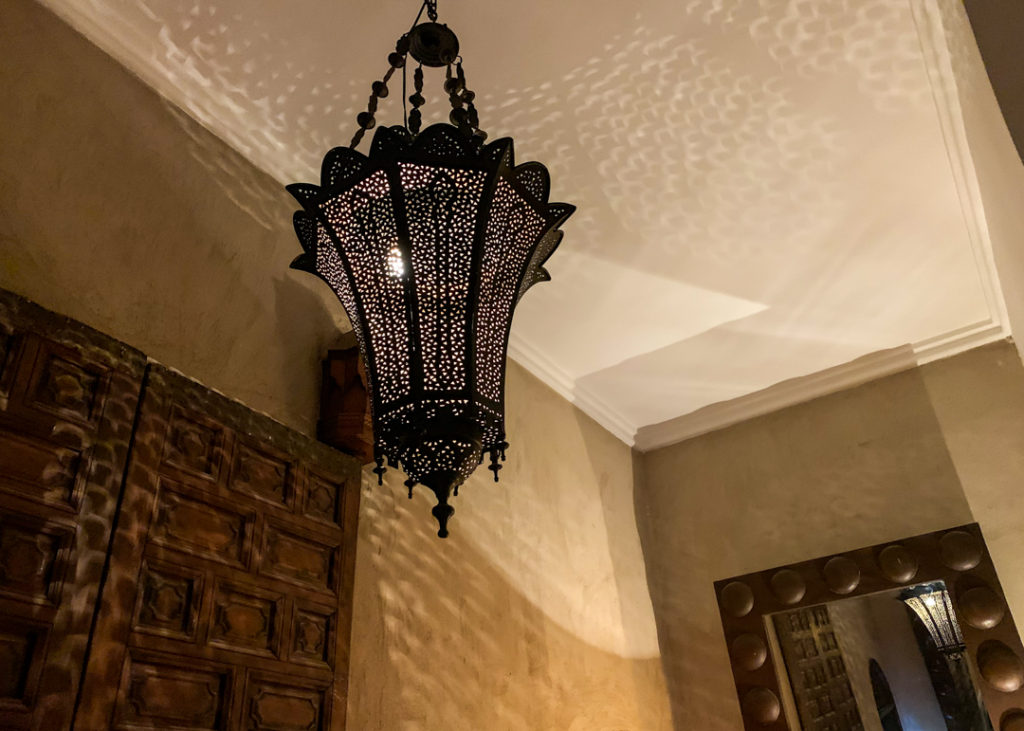
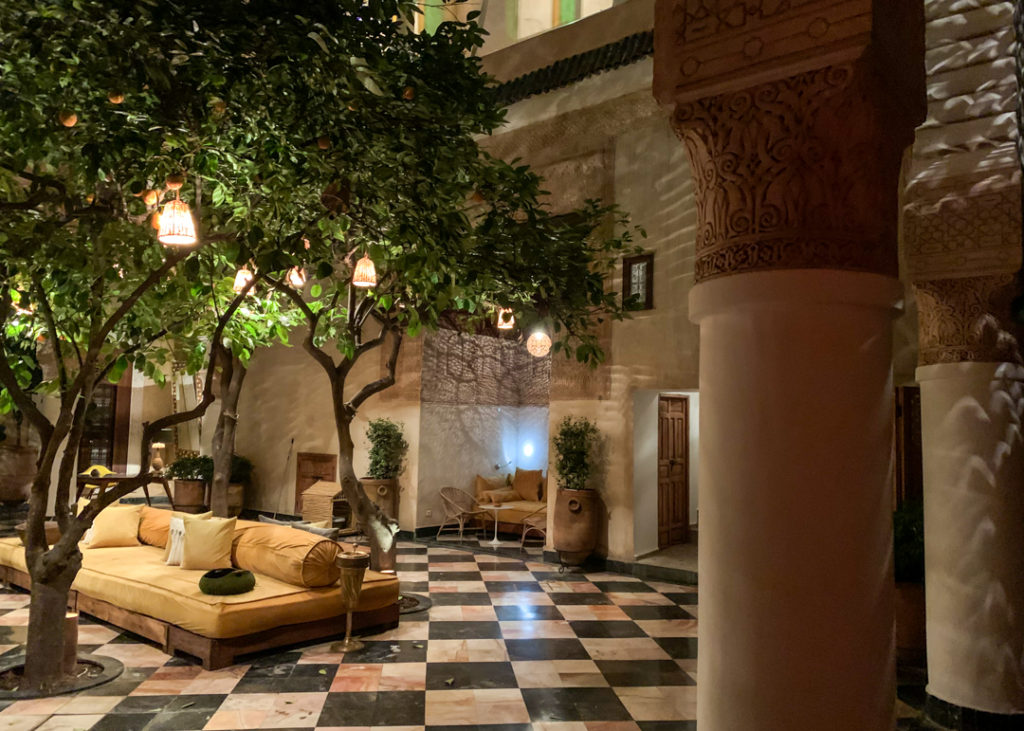
When you finally emerge on the streets of the medina, the magic has not yet left the building and it’s under a multicolor glow that you make your home home, still in a trance…
